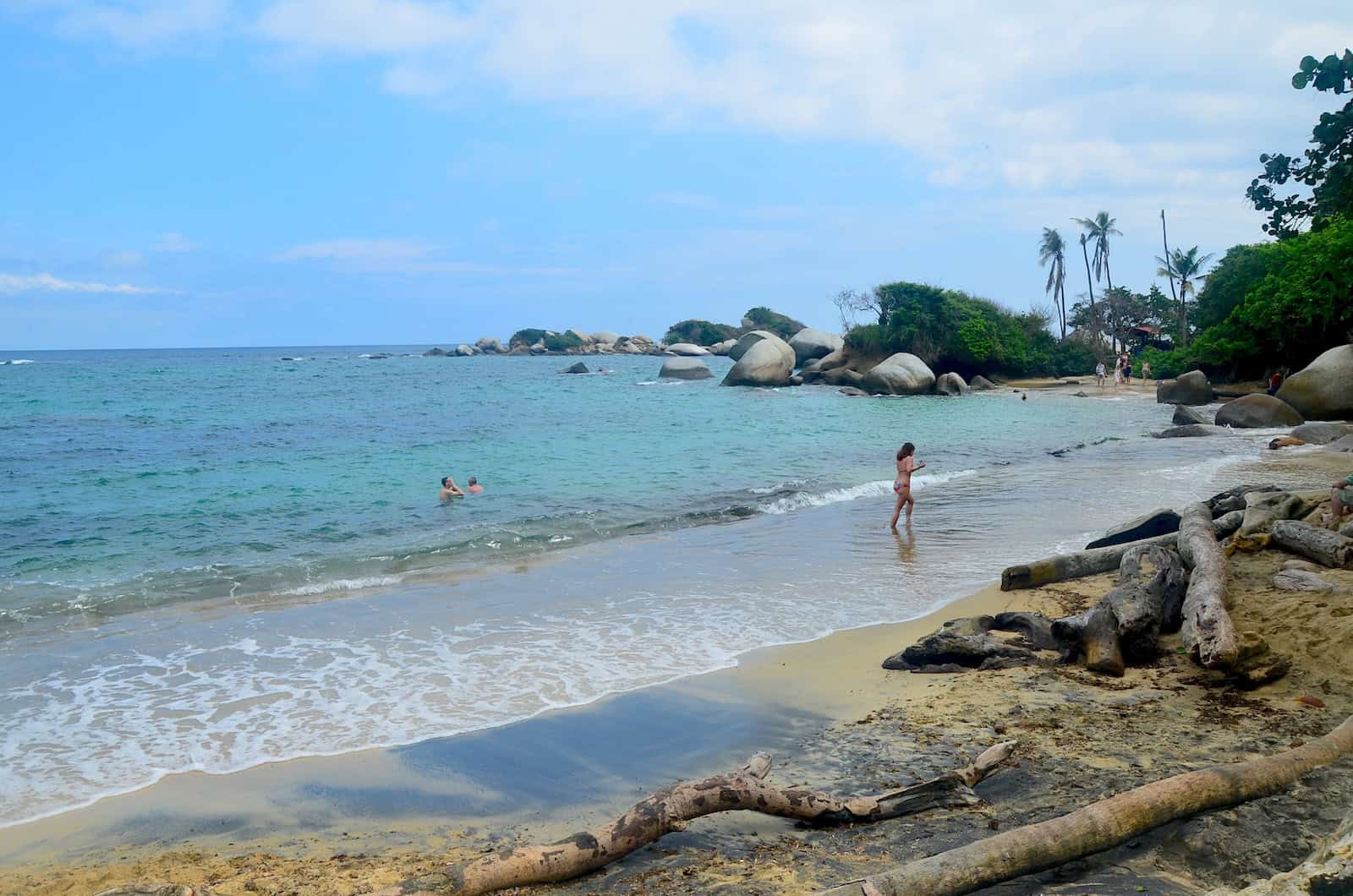Last updated on .
Buritaca is a beautiful natural place near Tayrona National Park in Colombia where a pristine river meets the Caribbean sea.
Introduction to Buritaca
I’ve been to Buritaca a few times, stopping on guided tours to other activities nearby. The drive into the village is through a seemingly endless banana plantation. Once there, you can enjoy the beach, take a short cruise up the Buritaca River, or enjoy a Caribbean-style lunch.
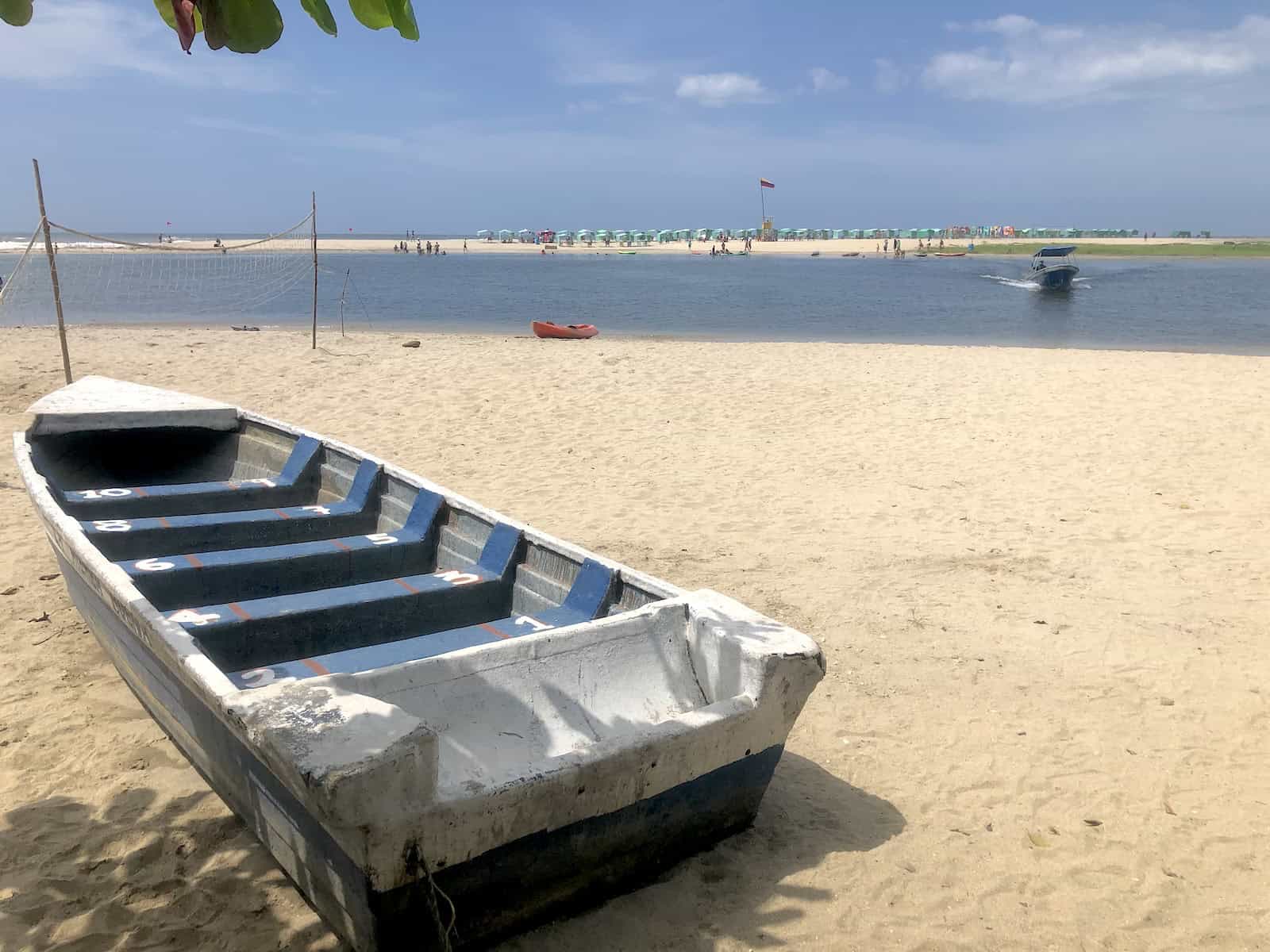
Beach at Buritaca
Buritaca features a thin strip of beach where the river meets the Caribbean Sea. The beach is open daily from 8am to 4:30pm. Visitors can either hire a boat to cross the river to the beach or walk across at a shallow point. The beach is beautiful but the surf is quite strong.
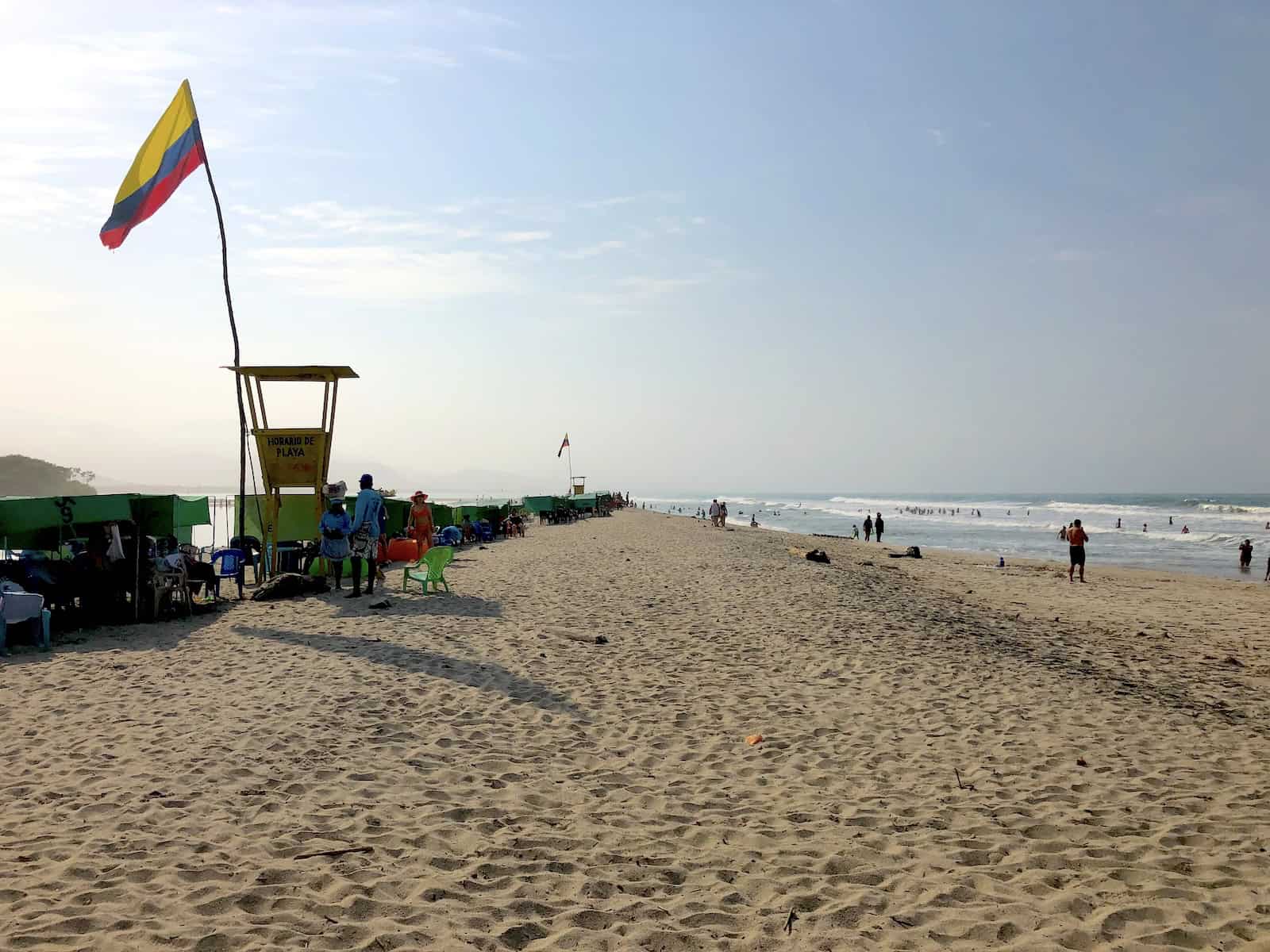
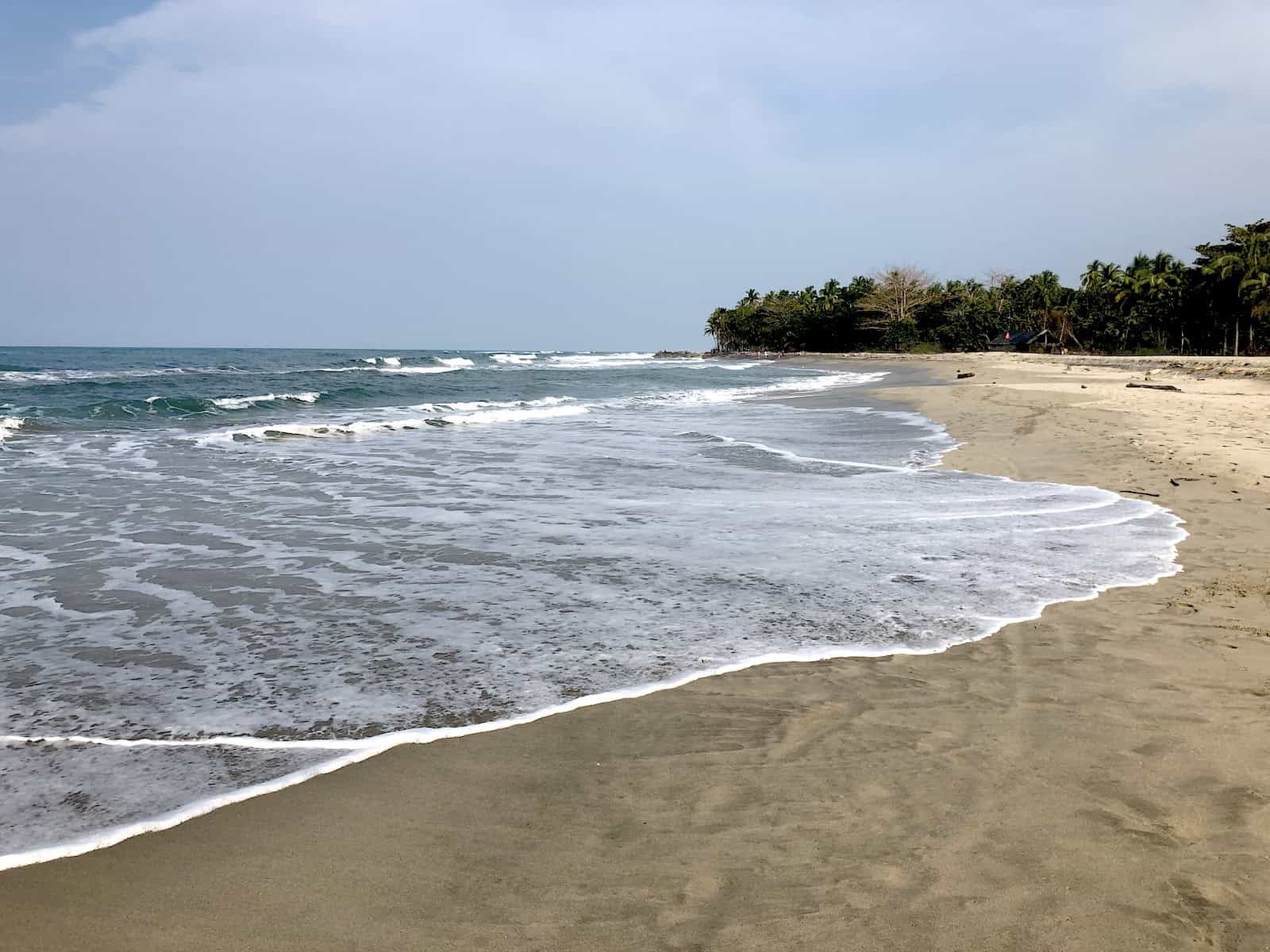
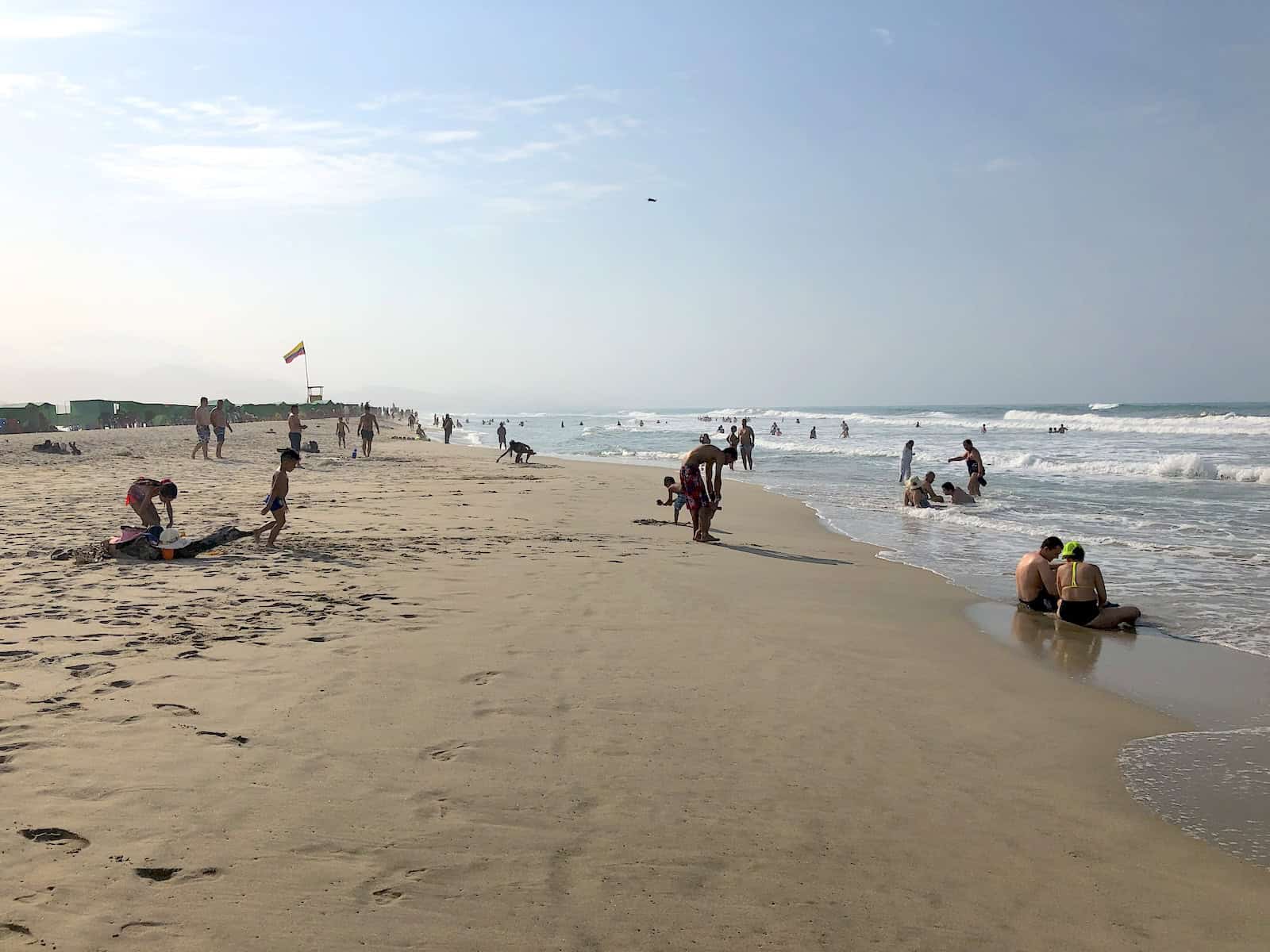
Buritaca River Cruise
One of the best activities in the village is to take a cruise up the Buritaca River. It’s a relaxing experience with some incredible scenery along the way, and it’s possible to swim as well. You can hire a boat at a launch along the river.

On one trip, our guide Elber pointed out several birds along the way, including herons. We also passed under a small bridge that banana farmers use to transport bananas across the river to be processed.
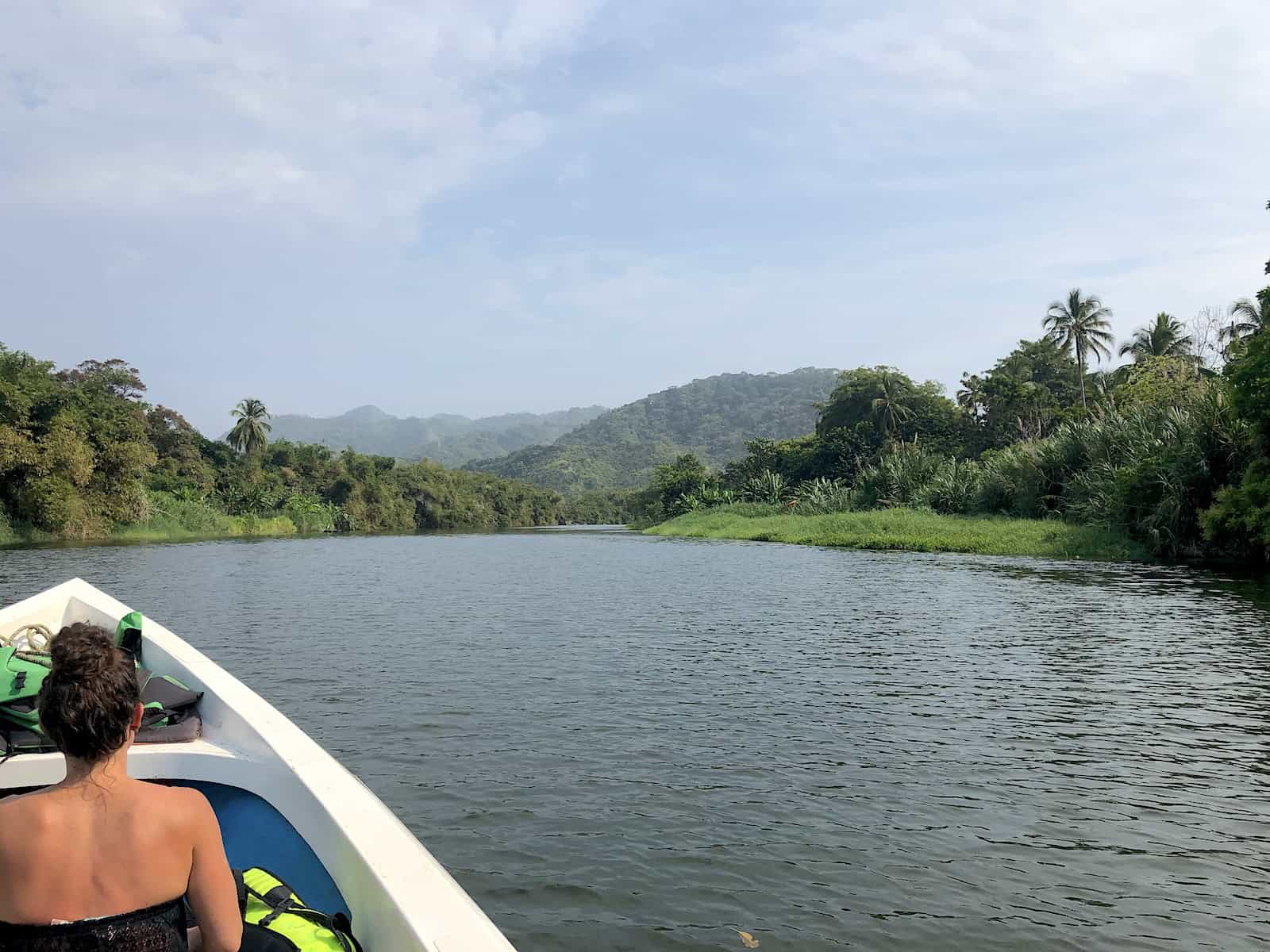
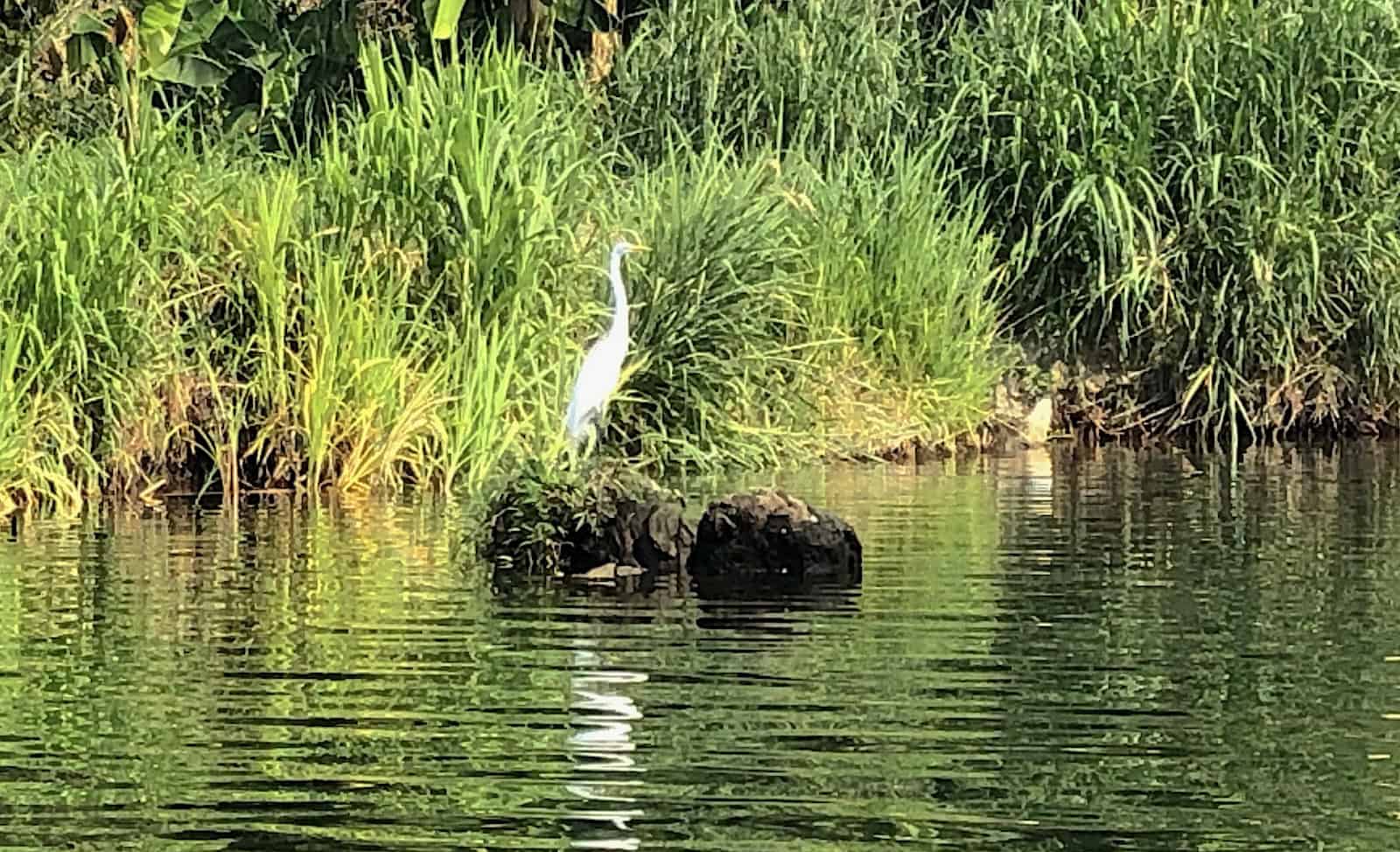

After about 15 minutes, we stopped at a rocky area where we were able to swim in the river. On the way back up the river, we were able to see the bananas passing across the bridge.
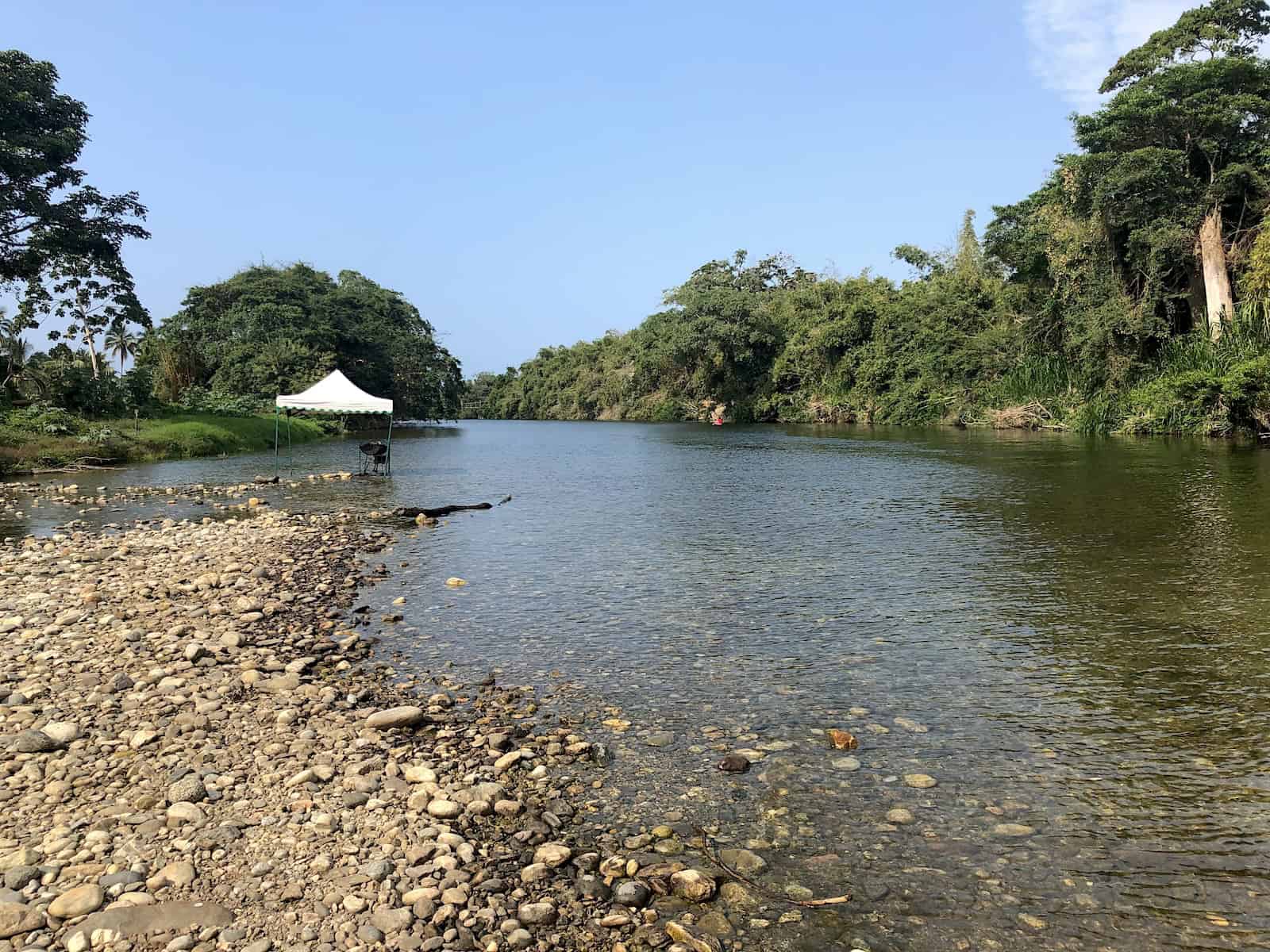

Where to Eat in Buritaca
You won’t have a hard time finding a decent place for lunch. There are plenty of restaurants with a nice view of the sea and river.
Restaurante Mira Mar
On one trip, we had lunch at Restaurante Mira Mar. They serve Caribbean dishes, seafood, and traditional Colombian cuisine. I had the chicken filet, which was served with rice, plantains, and a simple salad.
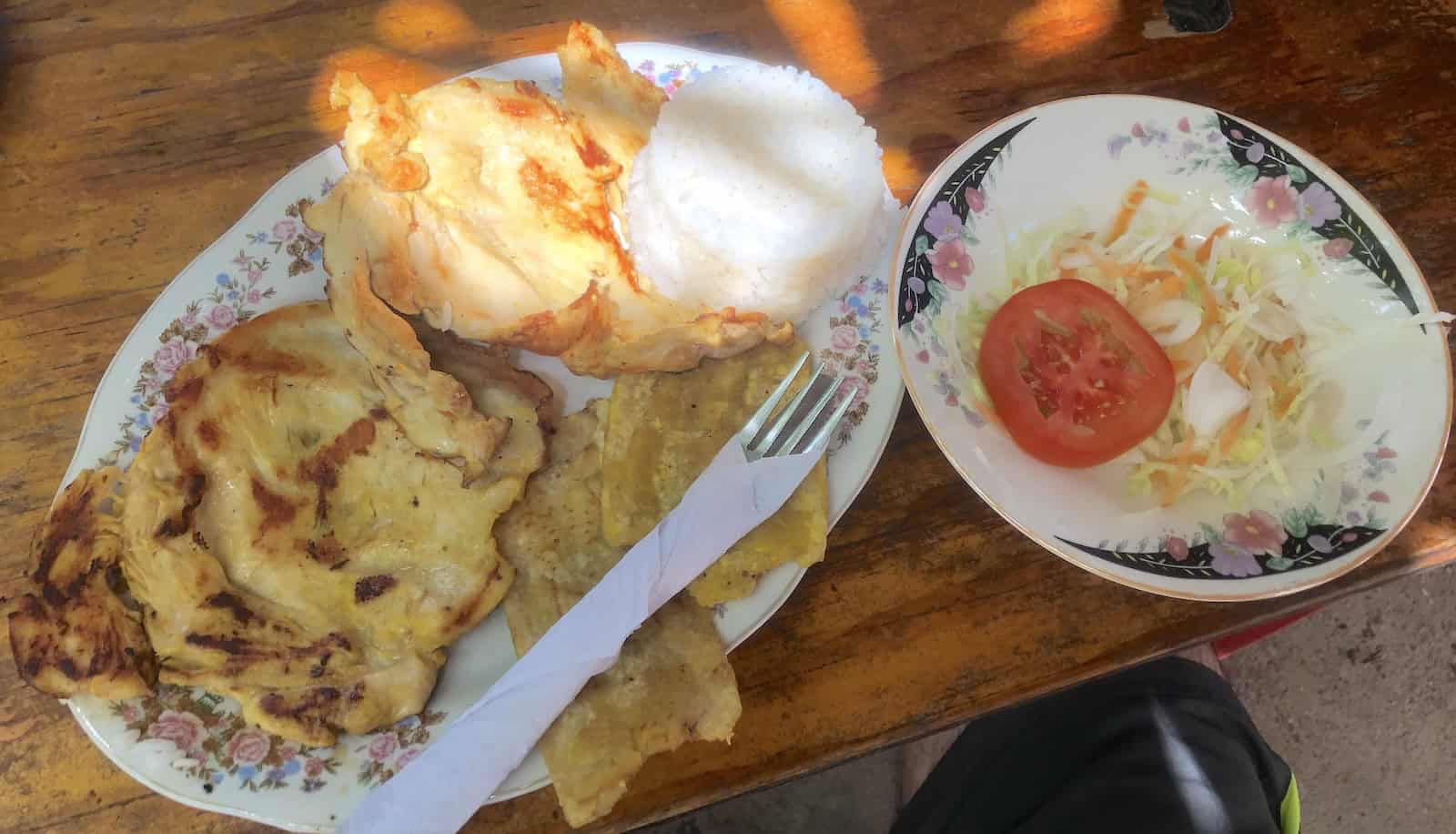
Unknown Restaurant
On another trip, we walked through the village and found a place to eat lunch. I had a seafood rice dish while the rest of the group ordered fish. Unfortunately, I don’t remember the name.

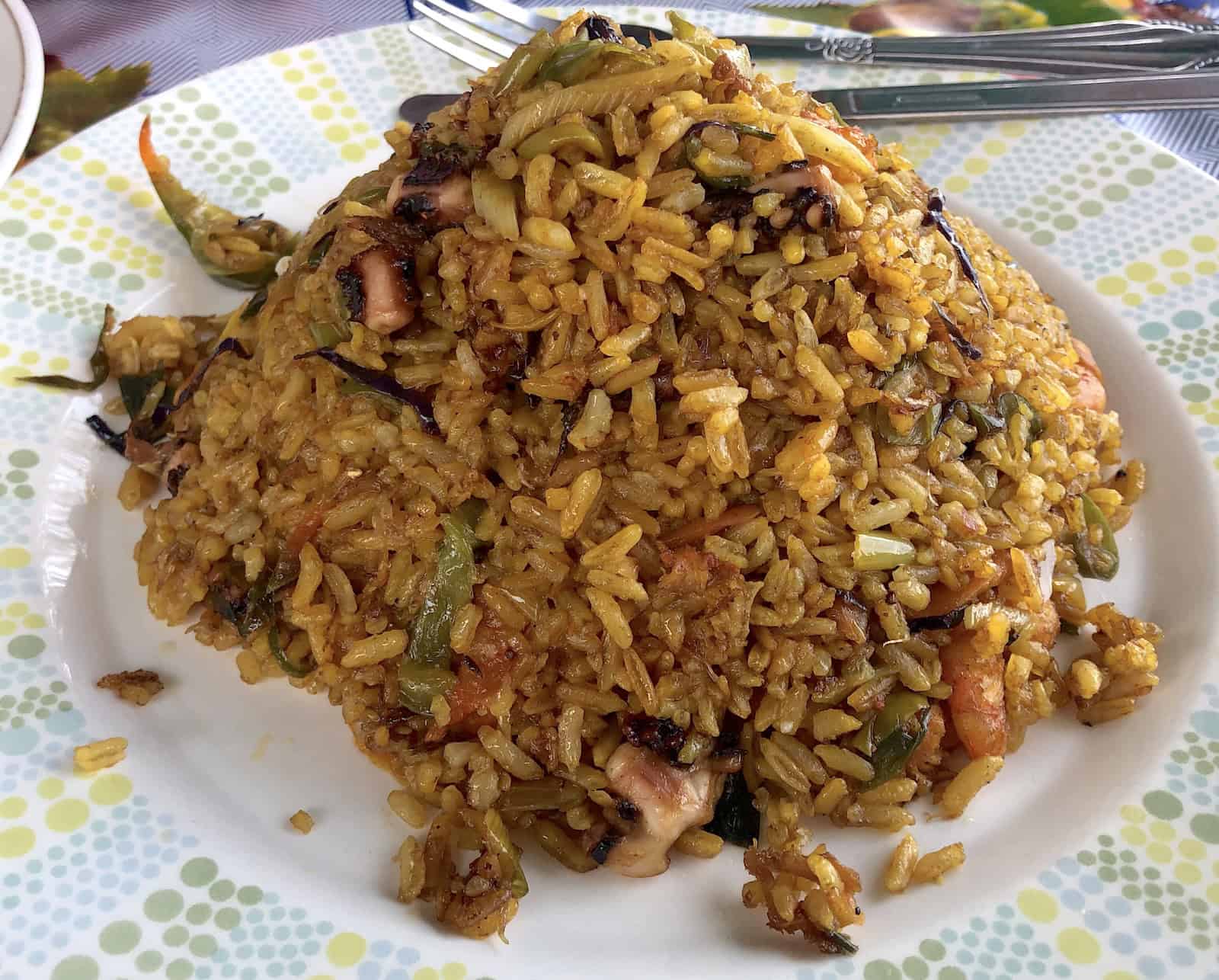
Quebrada Valencia
Quebrada Valencia is a natural swimming hole and waterfall located between Buritaca and Tayrona National Park. It’s a great place to visit if the park is closed or if you have extra time in the area. Admission is COP$11,000 per person (as of February 2025) and it’s an easy walk to the swimming hole.
It’s possible to take a tour from Santa Marta as well. I hired Magic Tour Colombia to take my Paisadventure group on a private tour of Quebrada Valencia followed by a lunch and swimming stop at Buritaca. The tour is currently unavailable (as of February 2025).
Our Experience at Quebrada Valencia
Our guide, Elber, promptly picked us up at our hotel, Villa María Tayrona, at 9am. We took a short drive to the trail. As we were walking, Elber lectured about some of the plants and trees we passed along the way. There were opportunities to stop and purchase locally made products along the way. A few women were selling coca tea, honey, and chocolates, while another made grilled plantains and arepas.

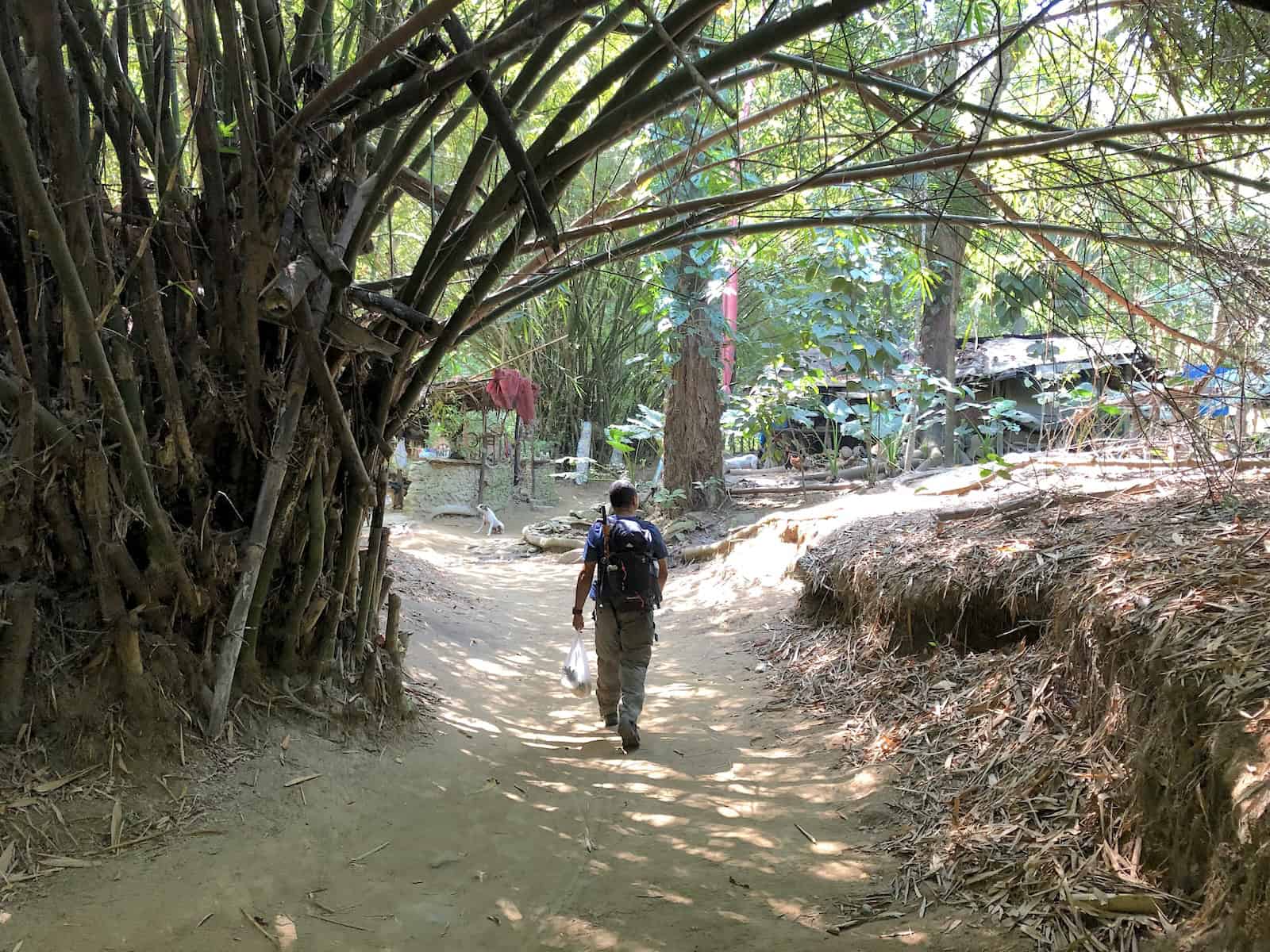
If you don’t feel like wearing shoes, the trail is very easy and can be done in flip flops. It takes about 20 minutes without stopping, but we took 30 minutes with all the explanations. We passed a couple of small homes along the way with bathrooms and some interesting decorations. The trail also crossed over the river a few times.
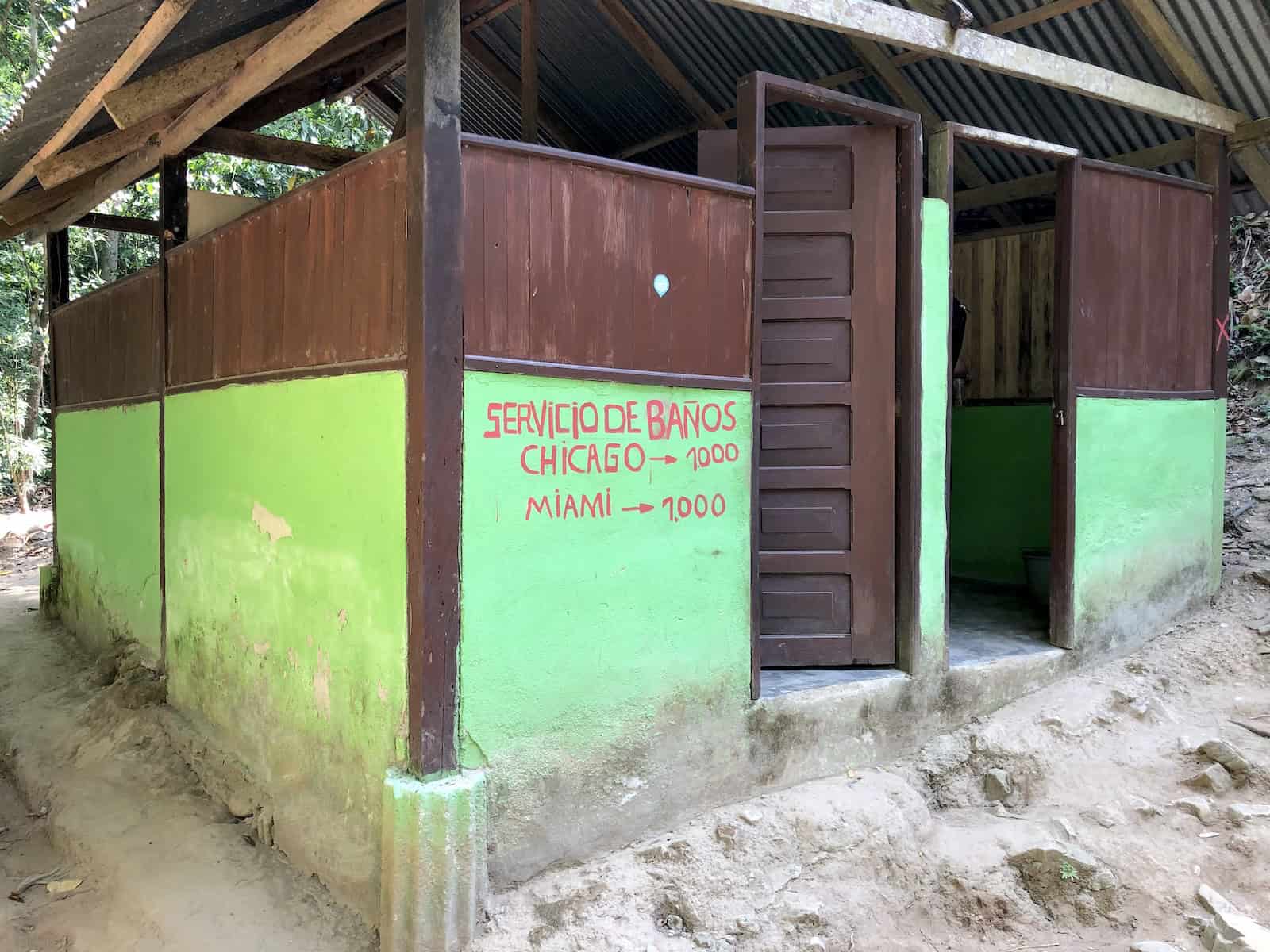
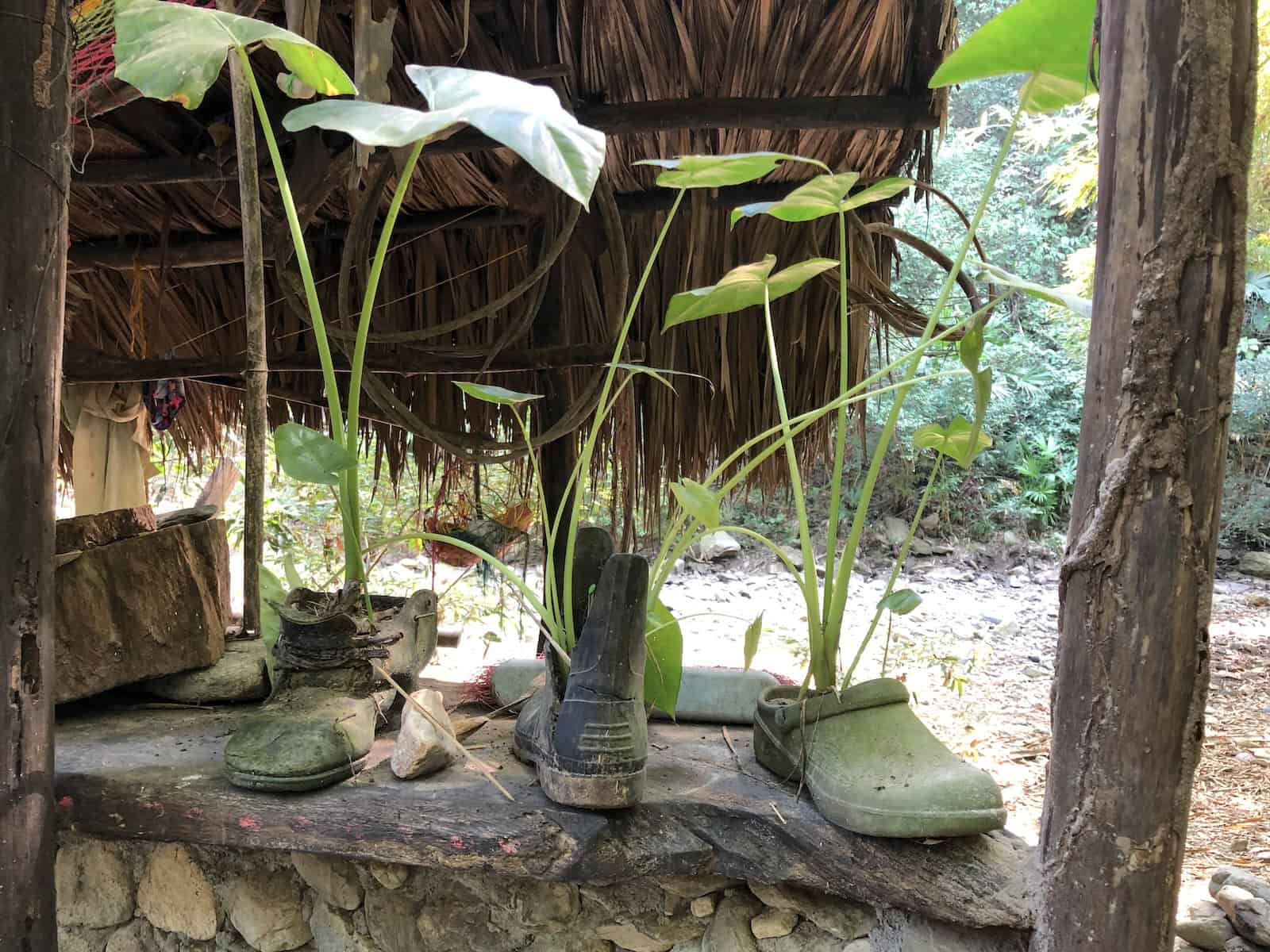

When we arrived at the swimming hole, it was completely empty except for one family. Due to lack of rain, the waterfall wasn’t as scenic as it normally is, but it was still a beautiful sight.

It’s possible to swim in the big pool at the bottom or climb the rocks higher for more spectacular pools. It can get a little slippery in the pools but the water is definitely refreshing. Also, if you plan to climb up higher, it’s better with bare feet or water shoes. Flip flops aren’t practical to go further up.

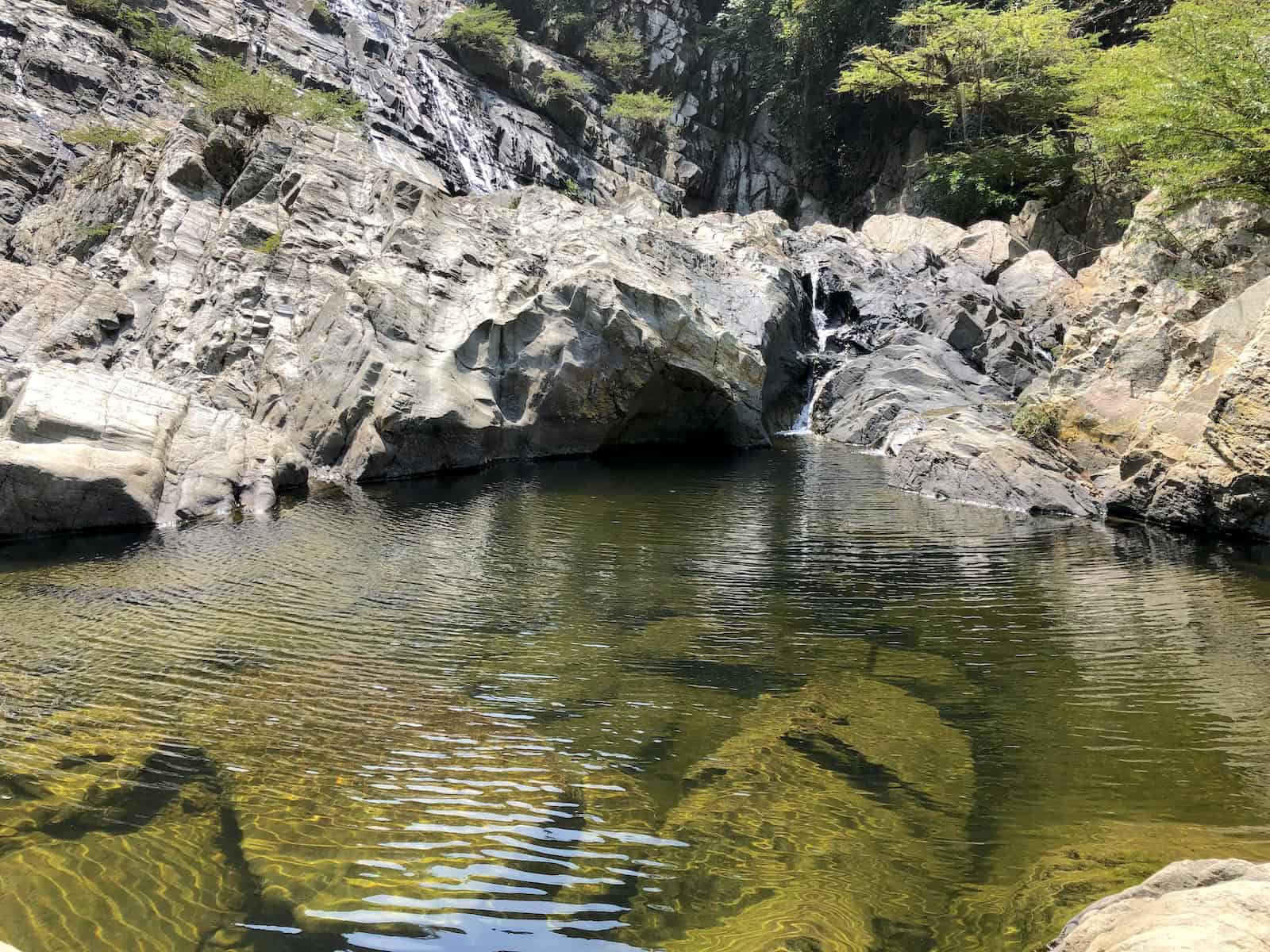
After we finished swimming in the pools, Elber cut a pineapple for the group and we walked back to the van. From there, we continued to Buritaca to finish the day.
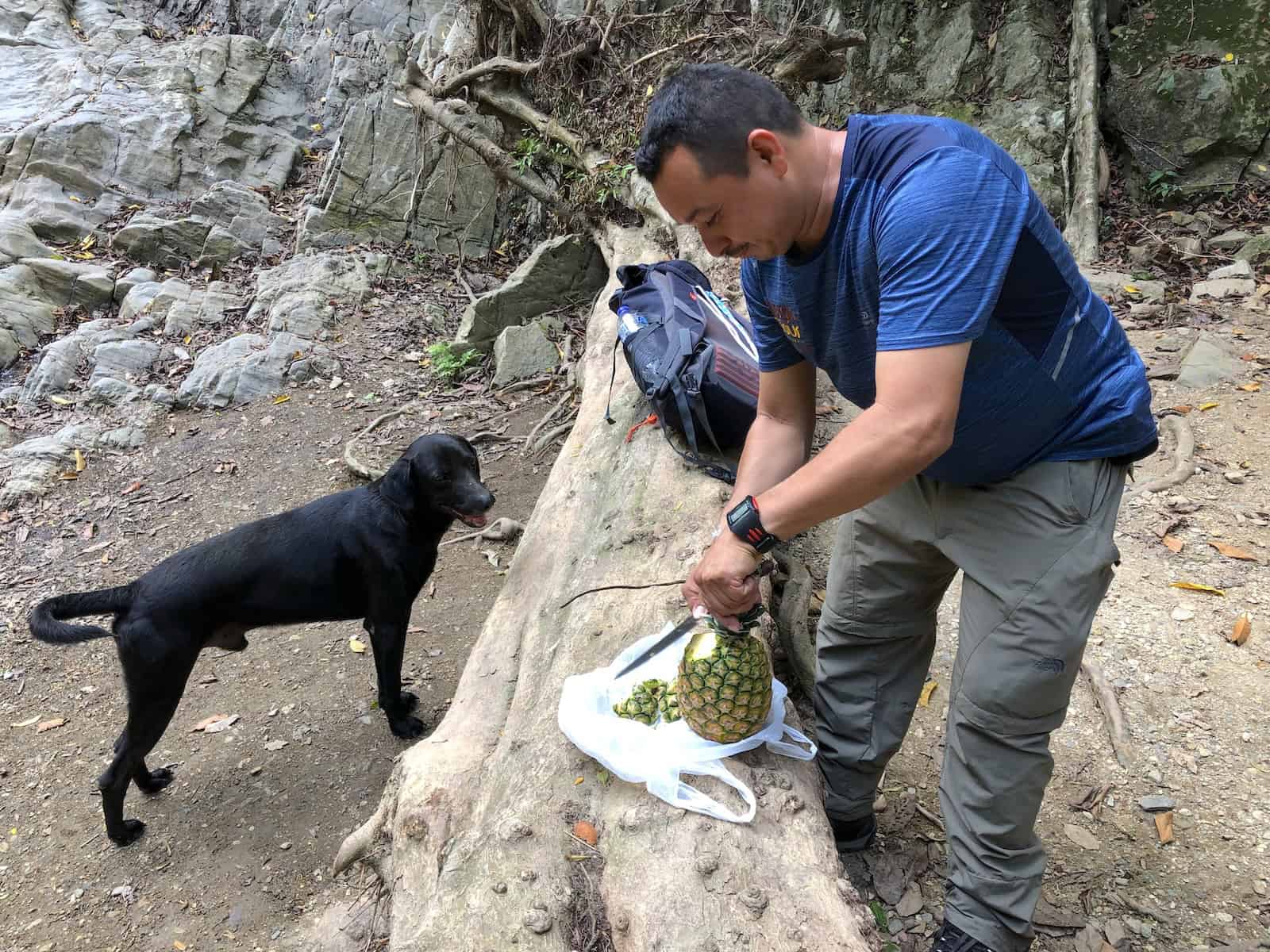
Cacao Tour at Finca MiraMar
Another great activity near Buritaca is to take a cacao tour. We took a group to Finca MiraMar on a tour led by Magic Tour Colombia. The tour included lunch in Buritaca followed by tubing on the Buritaca river. The guide can pick you up at your hotel in Santa Marta, or in our case, at our accommodation just outside Tayrona National Park. Good walking shoes are highly recommended, as it requires a steep uphill walk for at least 90 minutes. (Note: this specific tour is currently not available with Magic Tour as of February 2025, but they do offer other itineraries including the cacao tour. Contact Finca MiraMar directly for tour info.)
Hiking Up to Finca MiraMar
Our guide picked us up at 8am at our hotel, Villa María Tayrona, and took us on a short drive to Finca MiraMar where we met the cacao farmer. He and his family are descendants of the Wiwa ethnic group, one of the four indigenous cultures of the Sierra Nevada de Santa Marta. After formal introductions, we started our long hike up to the farmhouse.
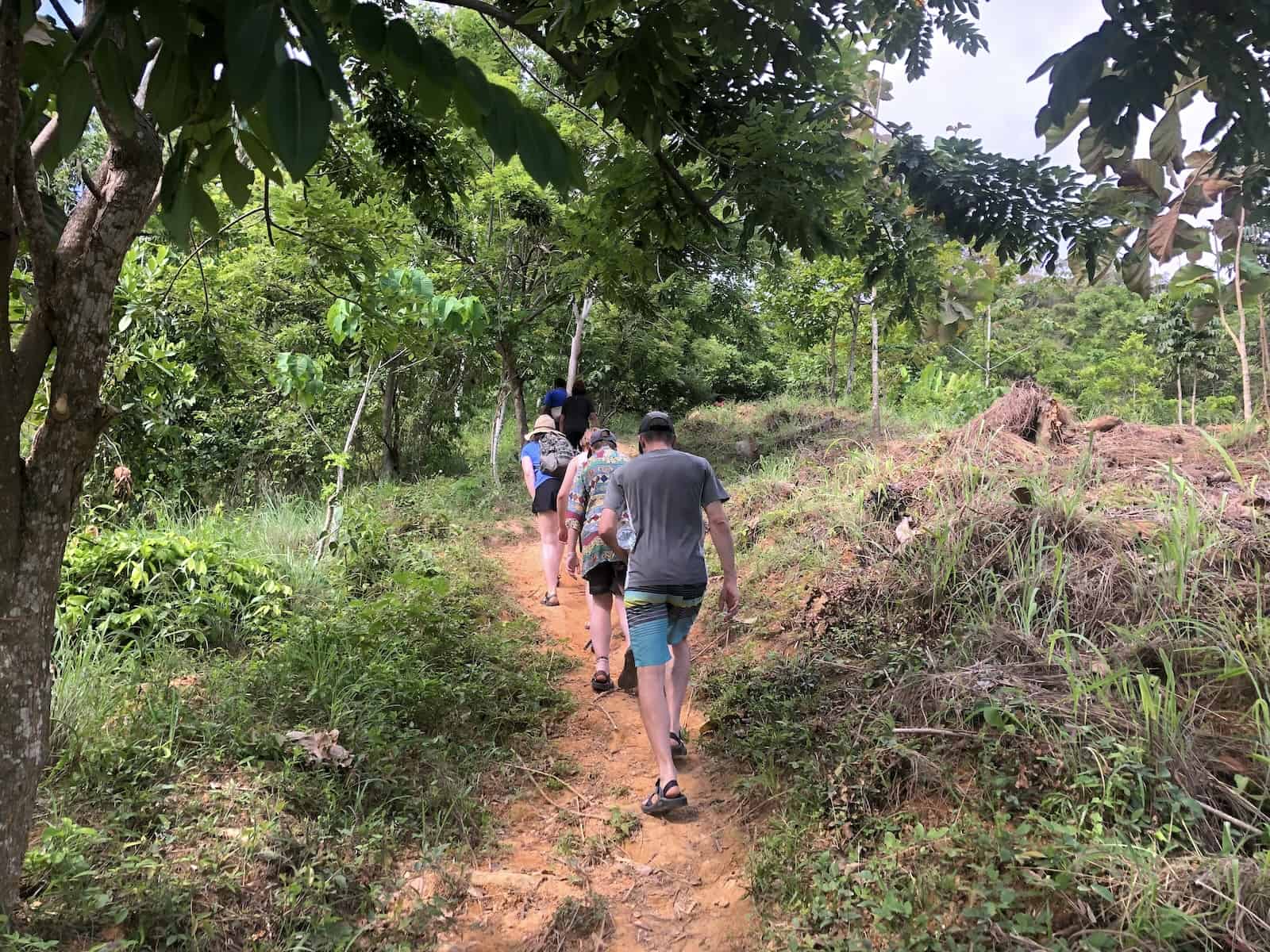
The first part of the hike went through a dense forest where the farmer pointed out a few important plant species as well as some birds and insects along the way. He also talked about the different types of cacao trees on the farm.
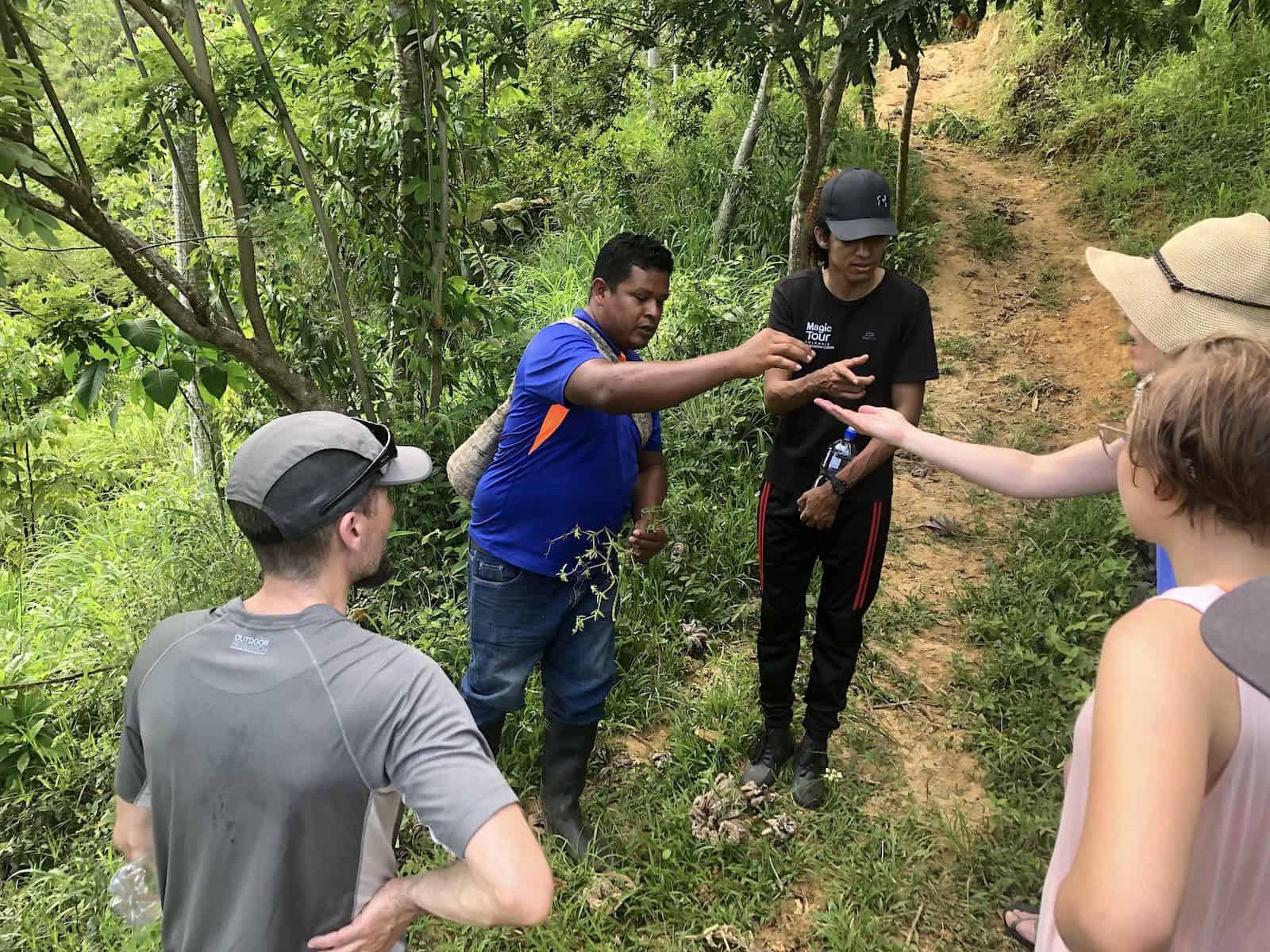

At one point, we began to see cacao growing on the trees as well as several cacao pods scattered along the ground. This is also when we started to get beautiful views of the coastline.
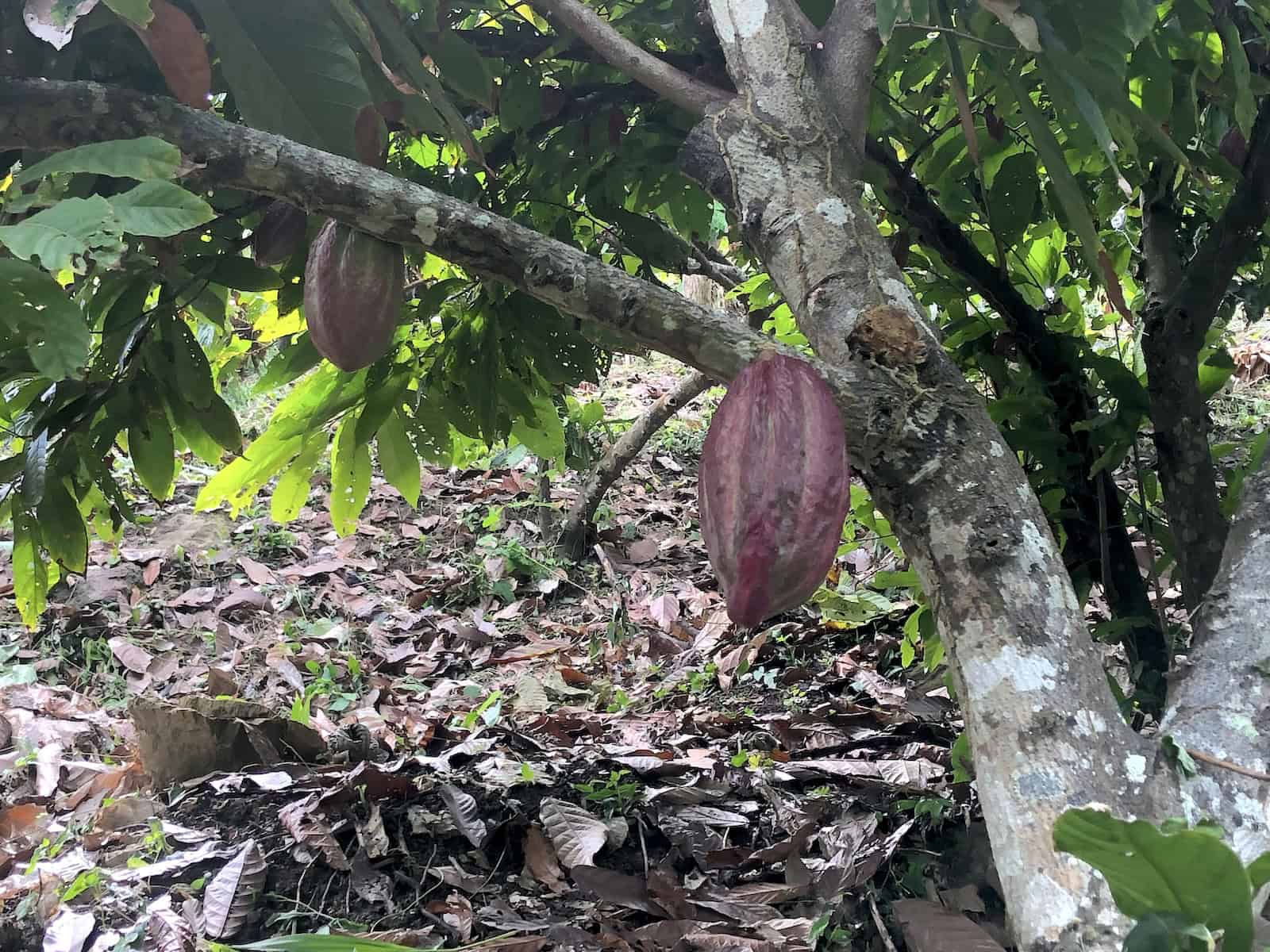
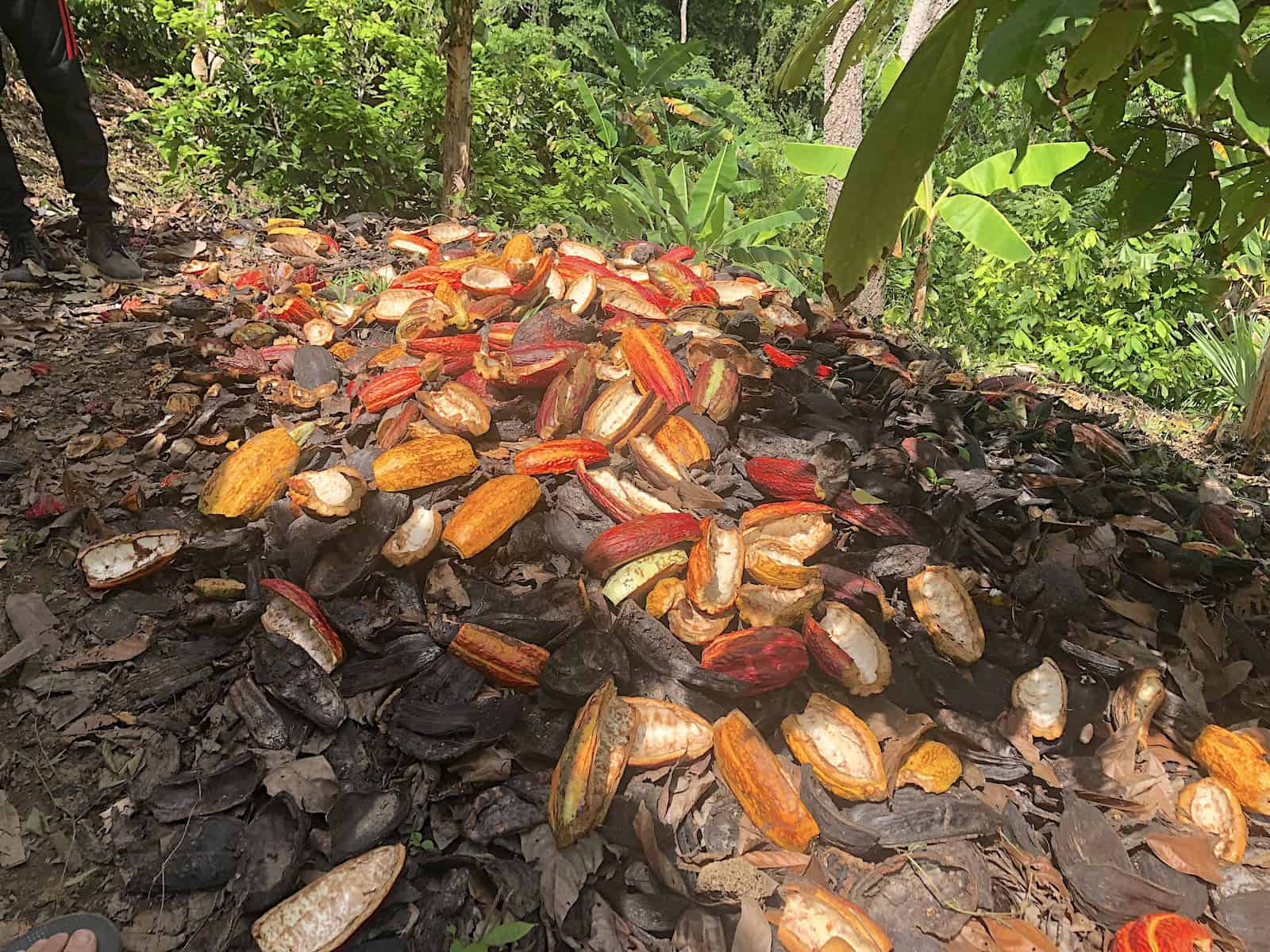
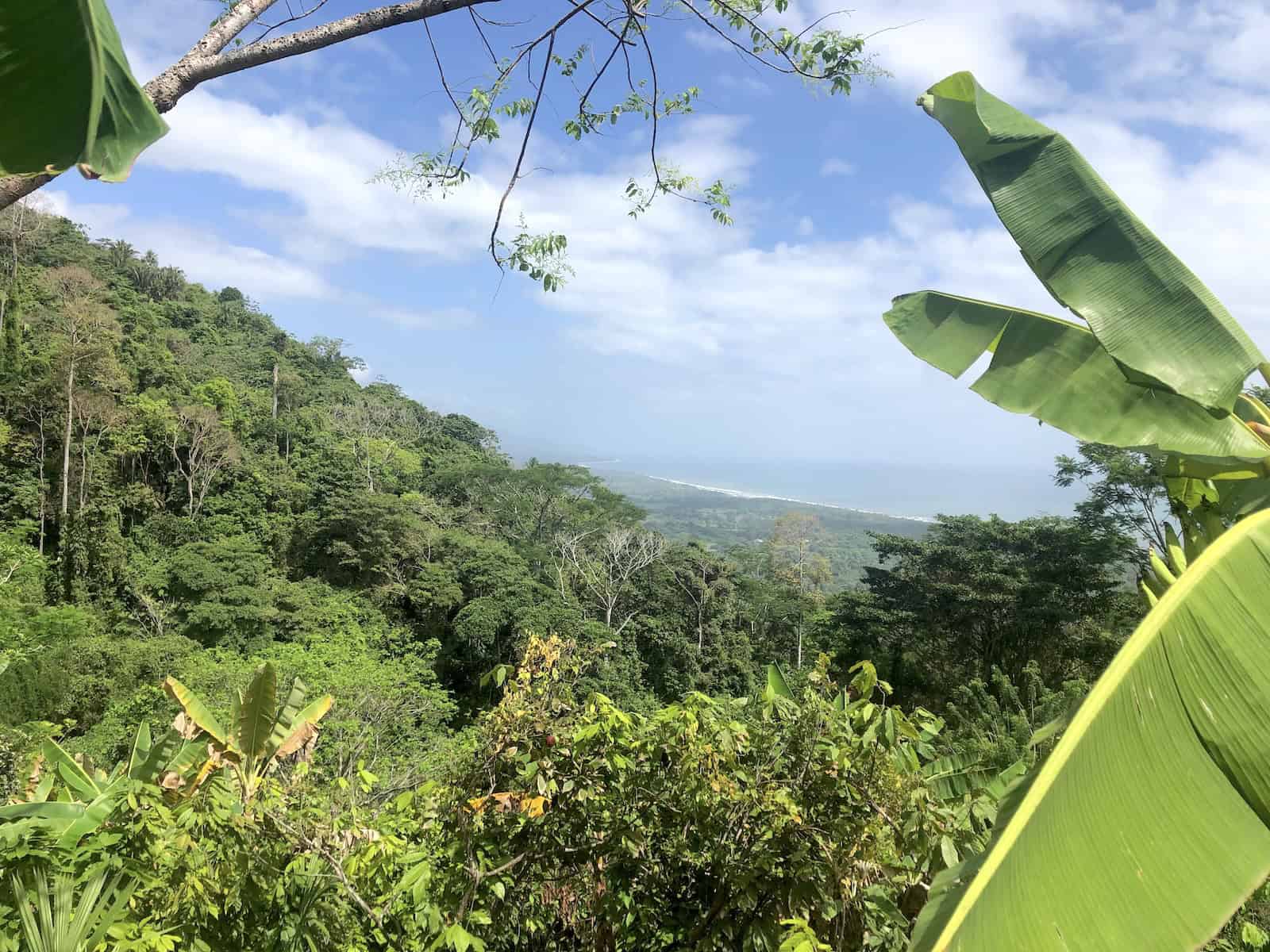
When the guide spotted some ripe cacao, he pulled it off the tree and let us handle it. He asked what we expected to see inside the pod, then took his machete and chopped it open. The guests were surprised to see slimy cacao beans covered in white pulp, and had no idea their chocolate came from these beans.

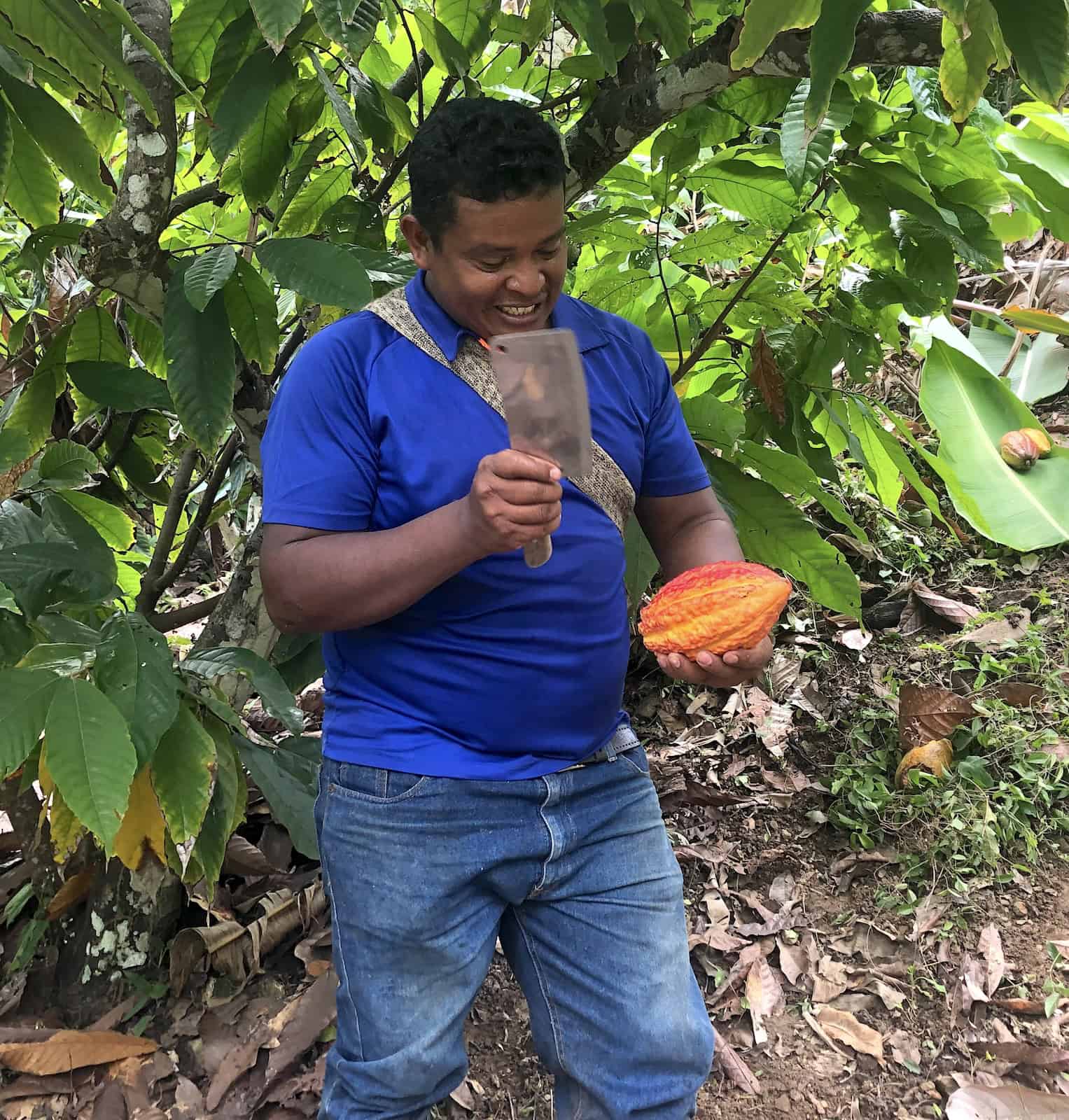
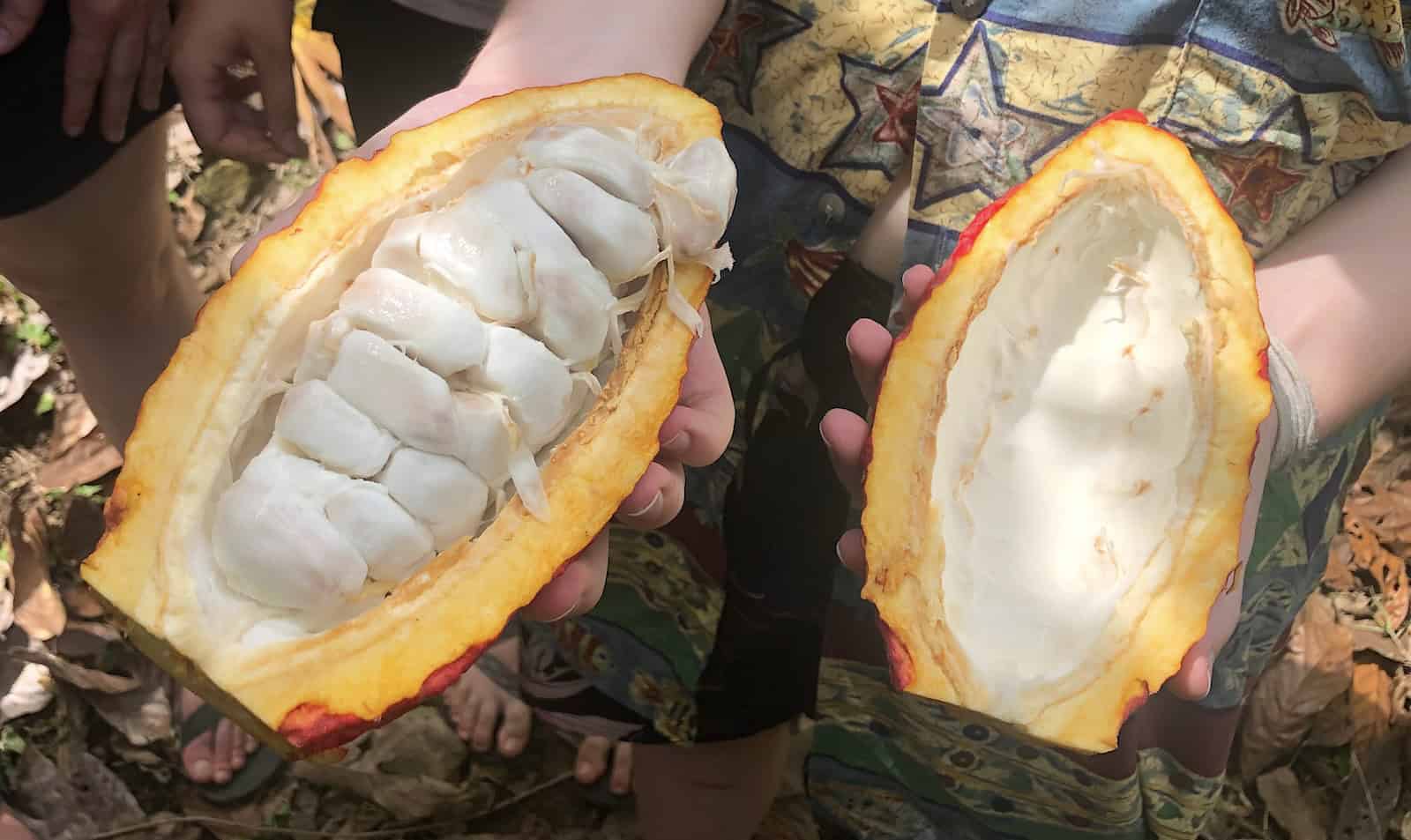
From Illegal to Legal
We then walked further up towards the farm until we came to a concrete pad. The farmer explained that up until around 2006, his farm used to illegally grow coca and process cocaine. The pad was where the coca paste was processed using several dangerous chemicals including acid, and children were never allowed to come near it. He said it’s not something he’s proud of, but it was important to tell the truth and come clean about his family’s history.
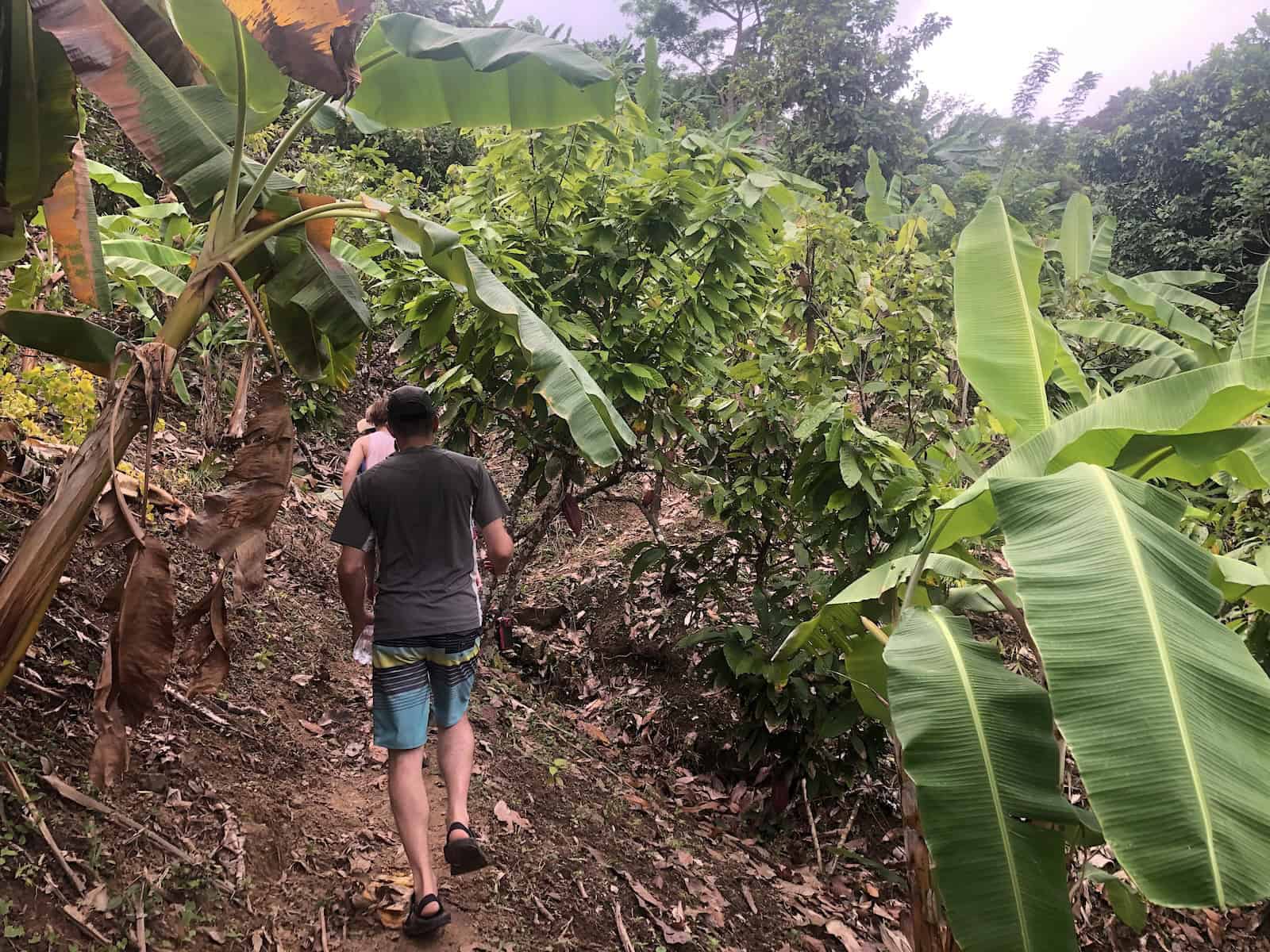
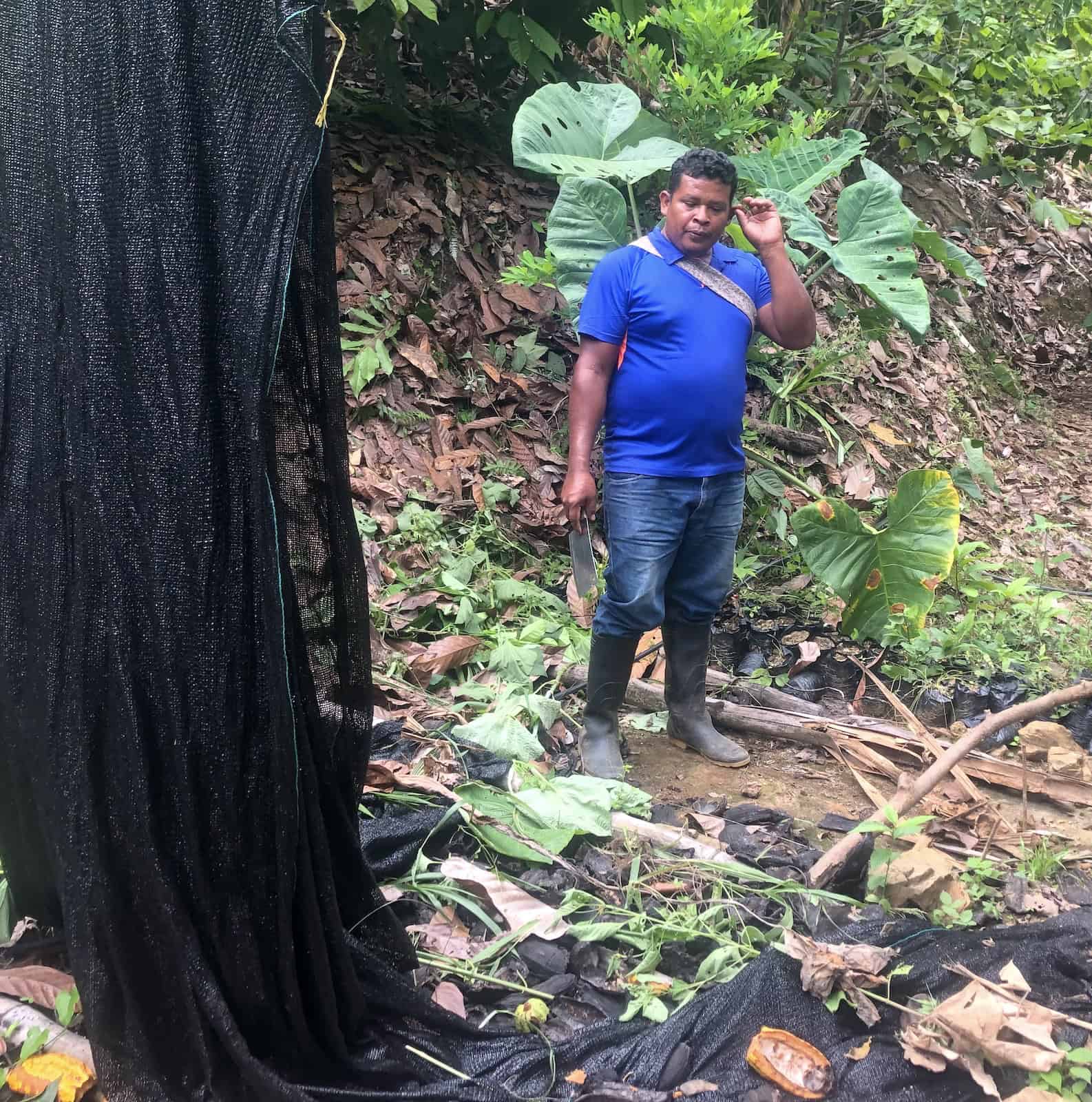
The farmer then told us about a government program aimed at eradicating cocaine production that gave local farmers incentives to grow legal crops, such as cacao and coffee. His family chose cacao and said it has been more profitable and much safer than producing coca. He said it gives them more pride to provide something that brings joy rather than a product that has caused so much damage to families around the world, but also highlighted the important uses of coca leaves, especially among indigenous communities.
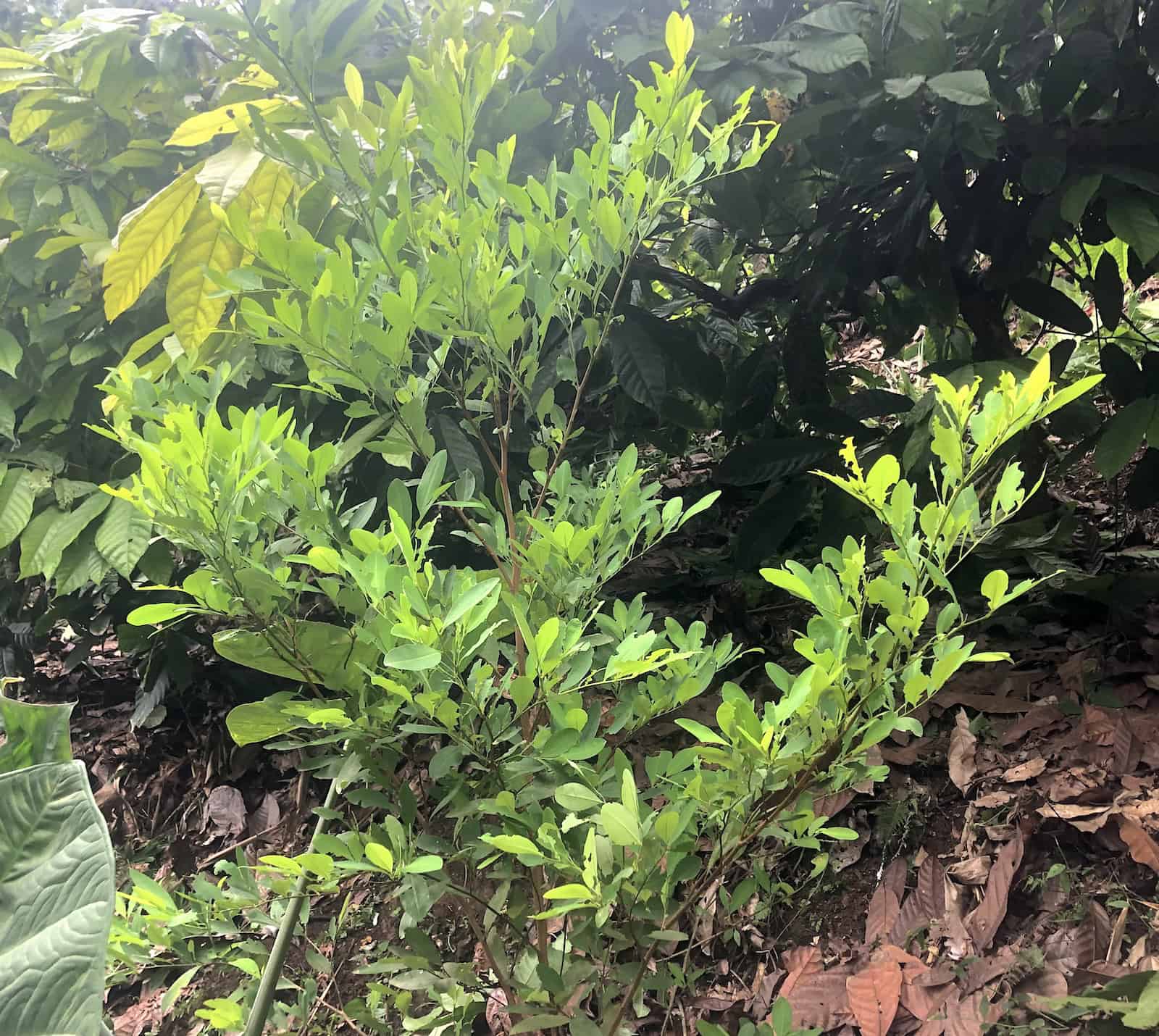
Processing Cacao
Finally, we made it up to the modest farmhouse where the farmer’s mother greeted us with fresh aguapanela and a red pear-like fruit called poma.
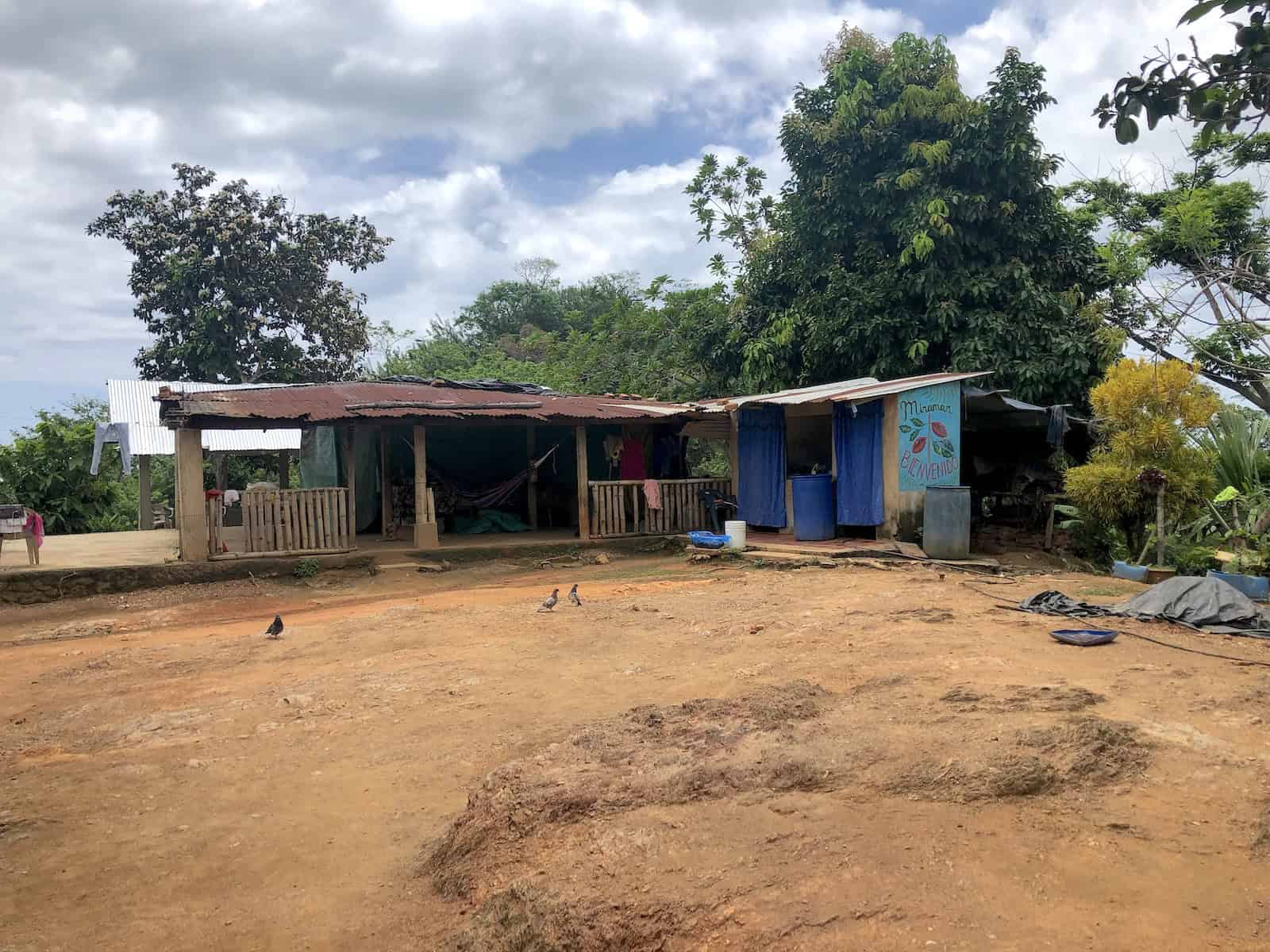
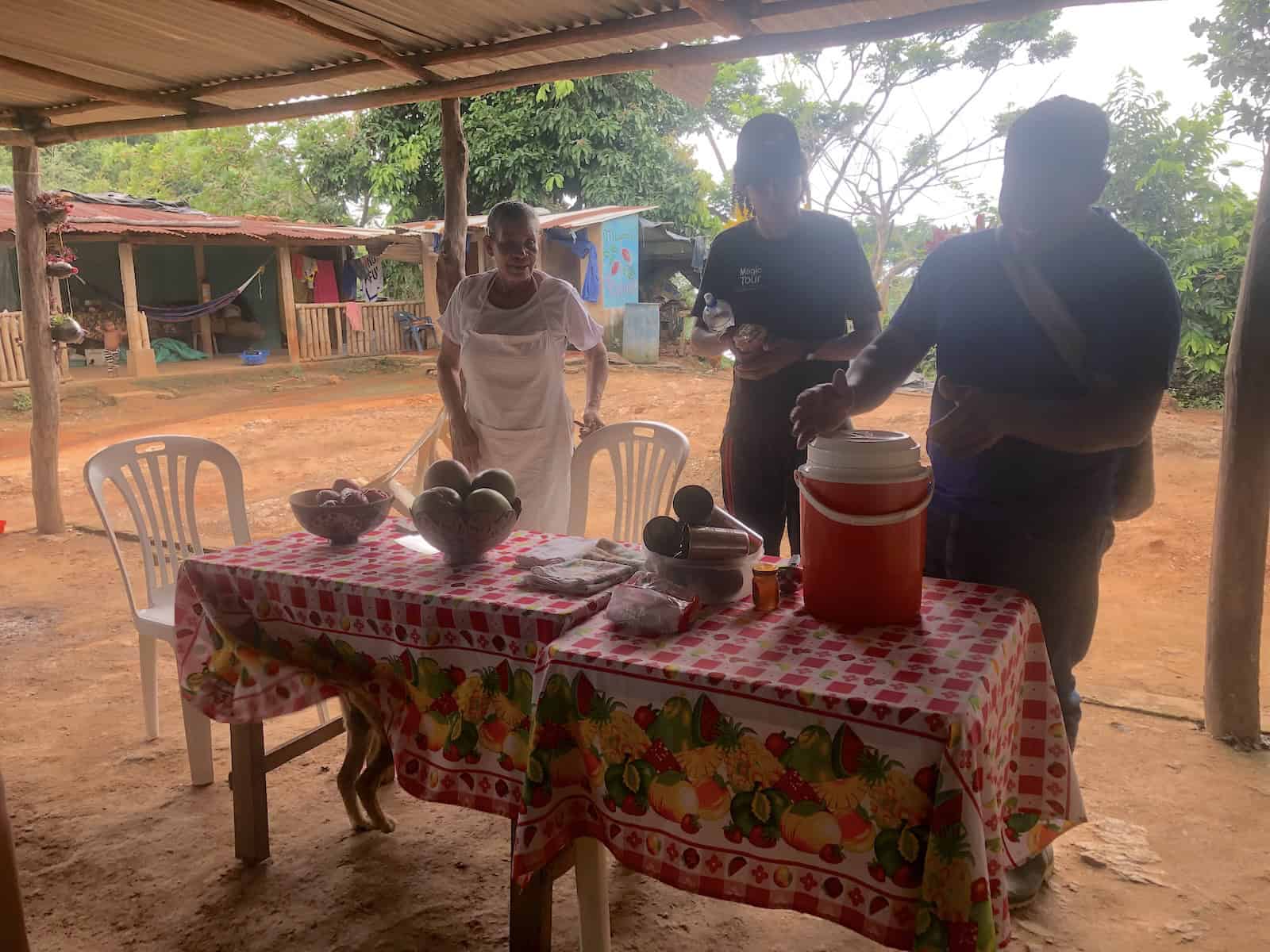
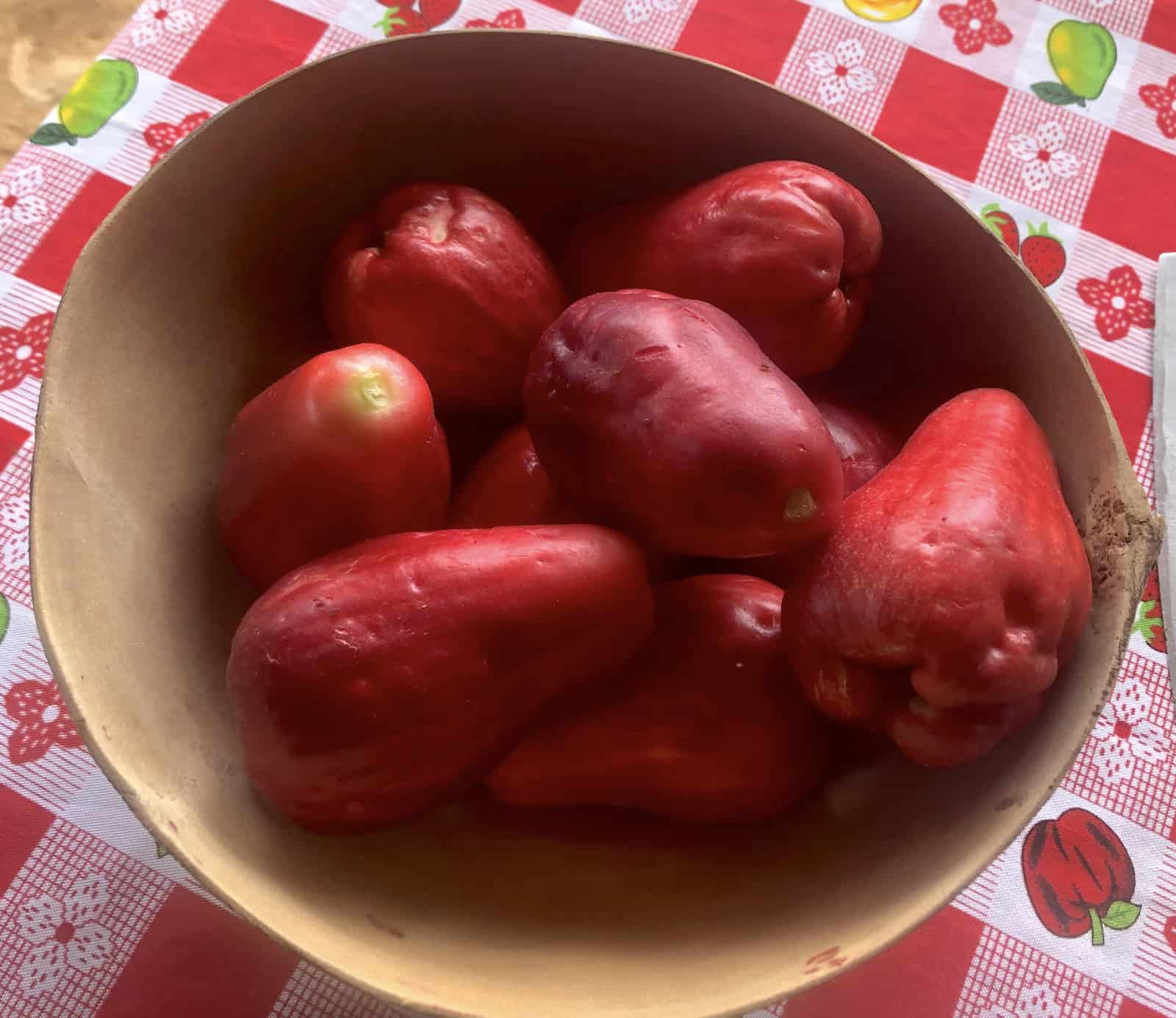
After enjoying our well-deserved break, we continued the cacao tour. The farmer took us over to a wooden vat to show us where the cacao is allowed to ferment. He mentioned that even the biggest chocolate producers in Colombia use the same simple vats to ferment their beans. We then chose the cacao beans from which we would produce our very own bar of chocolate.
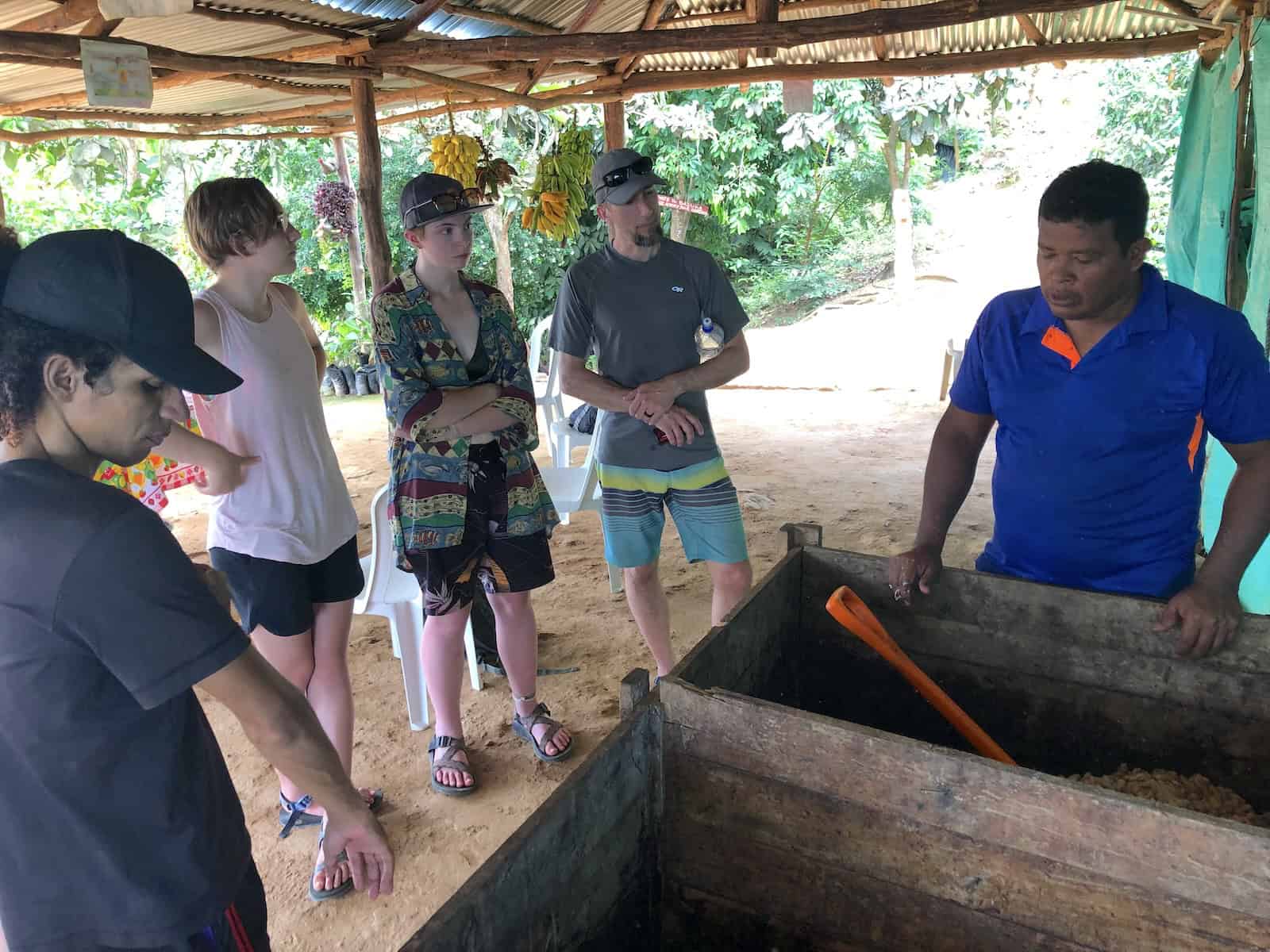
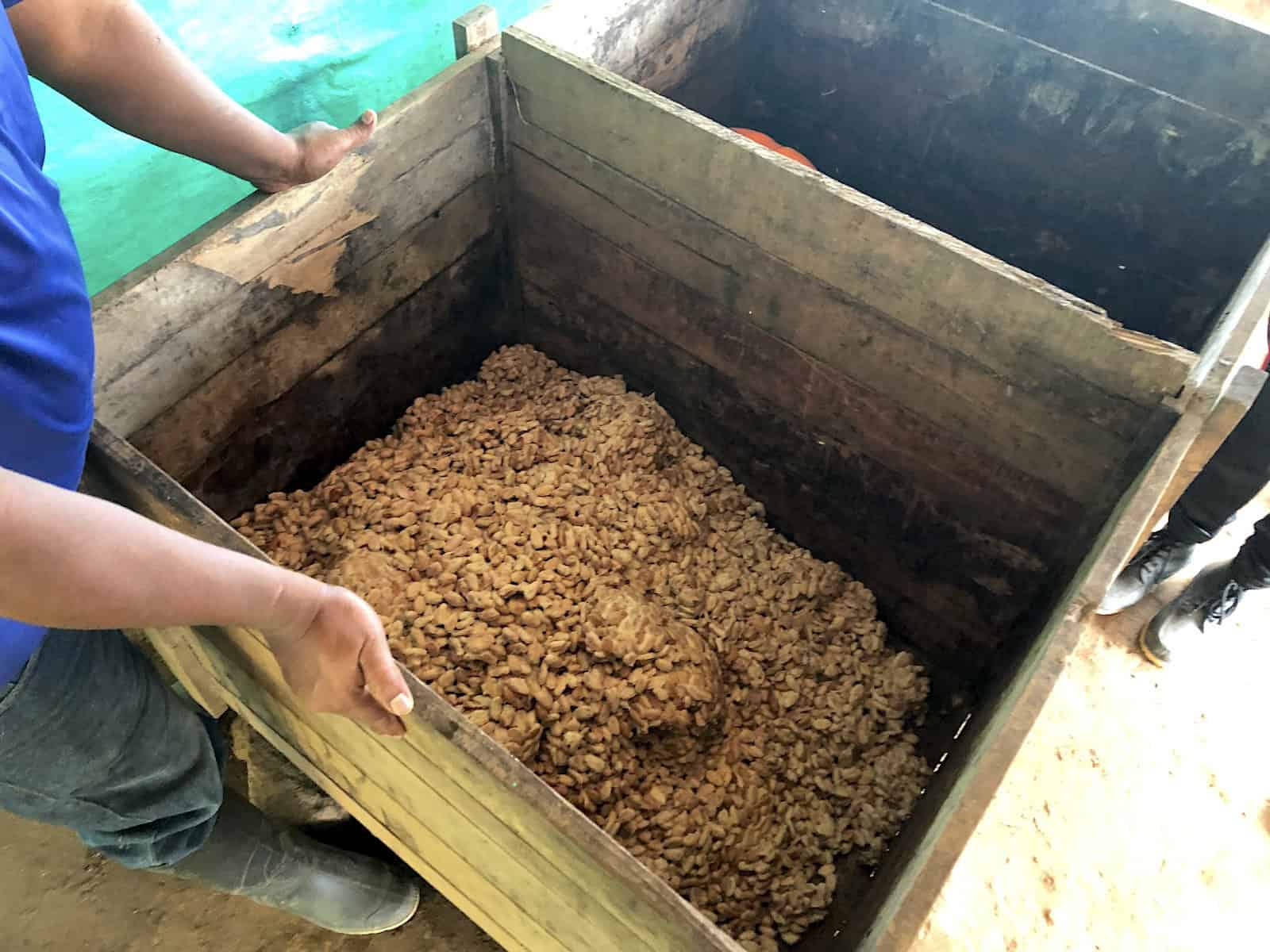
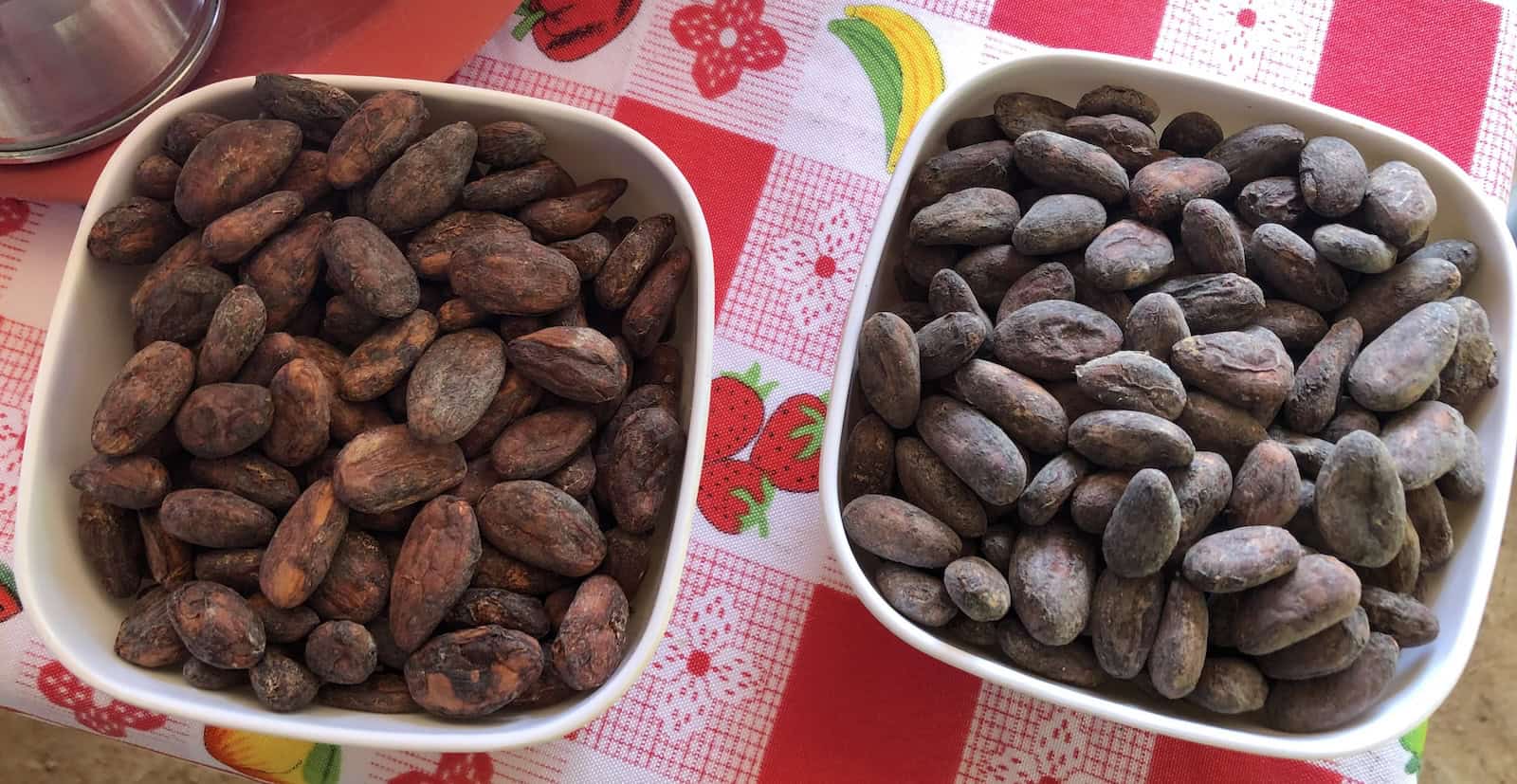
The farmer took us over to his kitchen, and he poured the cacao beans into a pan and began to roast them. Our guests took turns stirring the beans, and when they began to pop, the farmer took them off the fire.
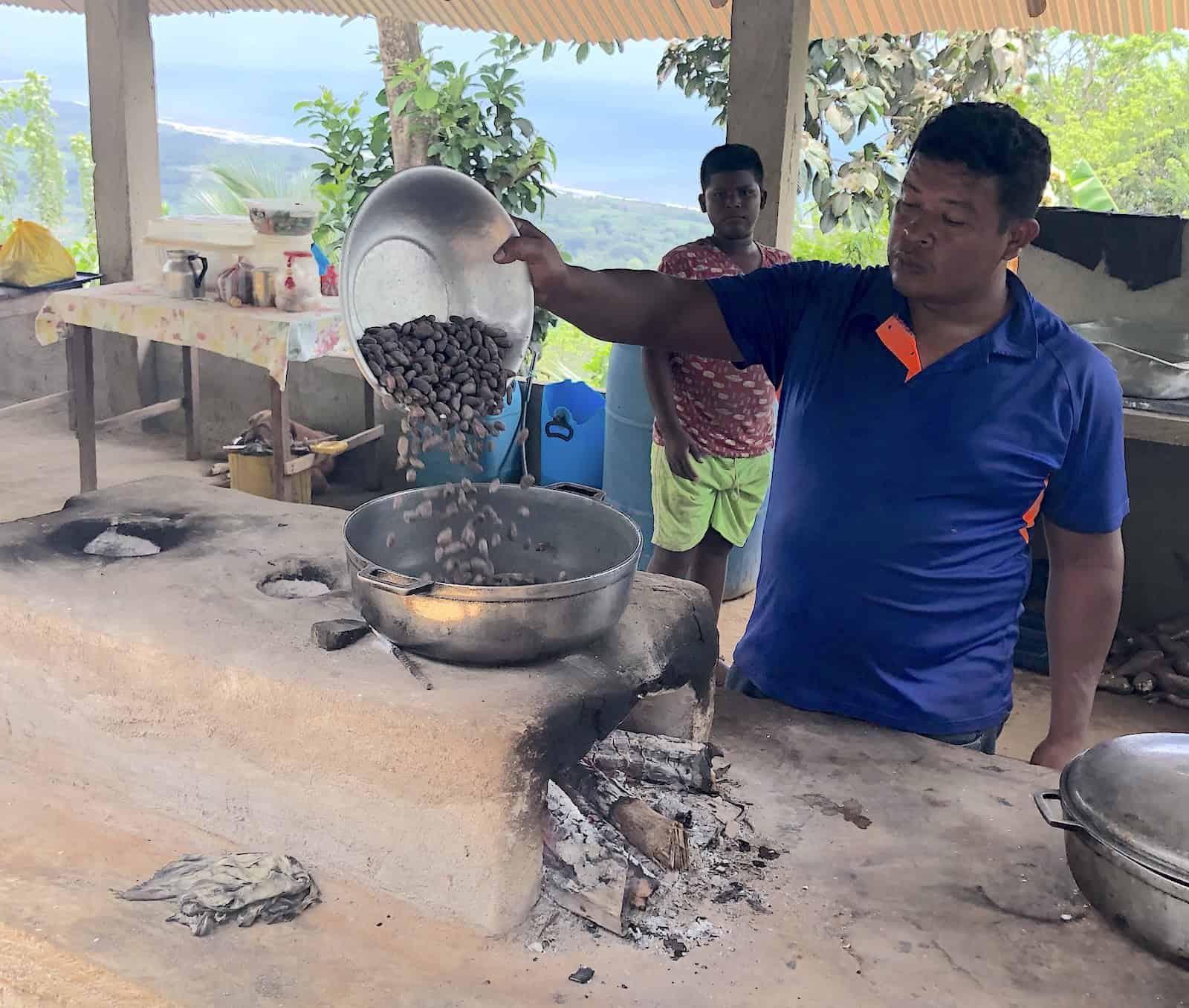
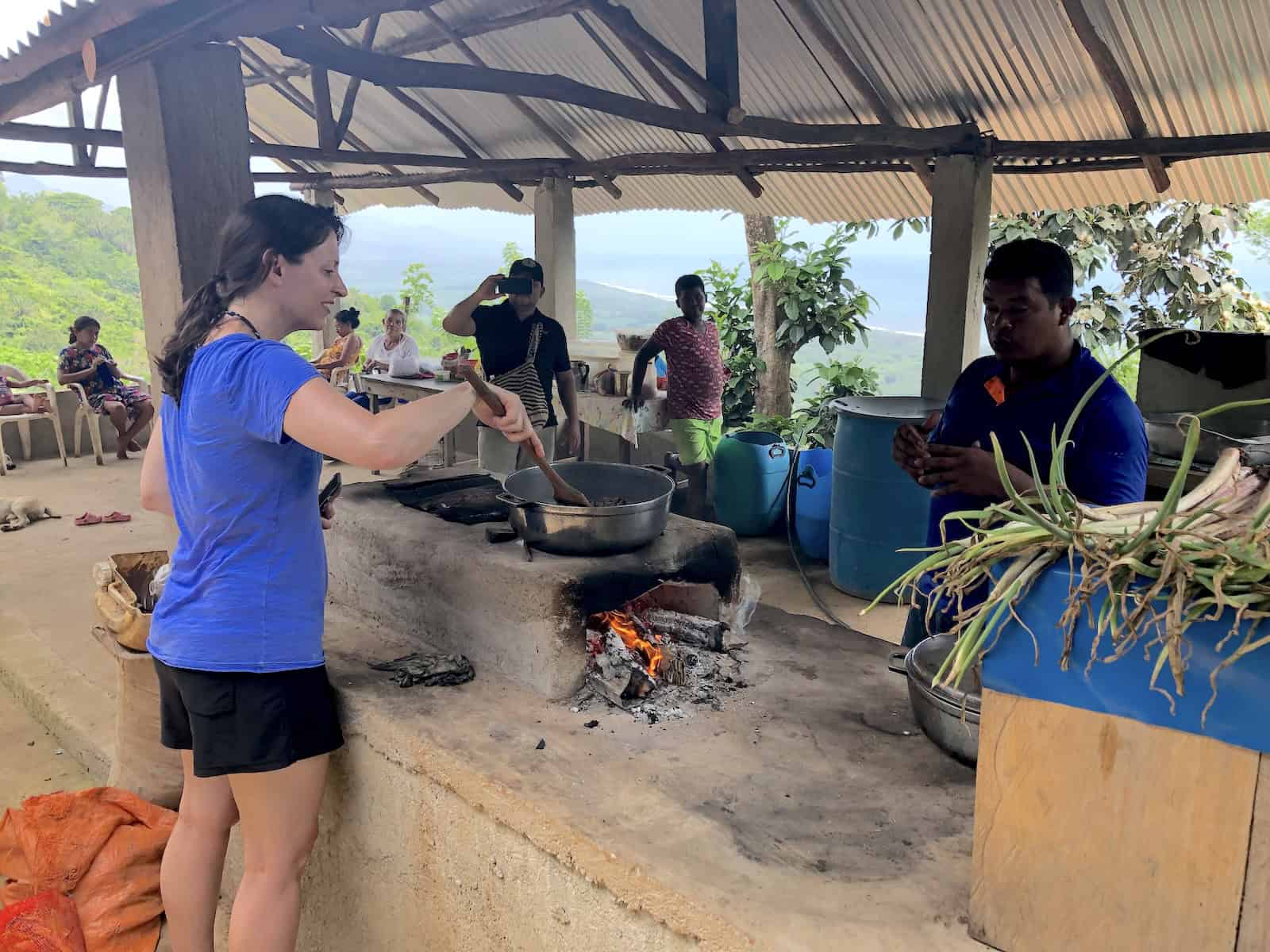
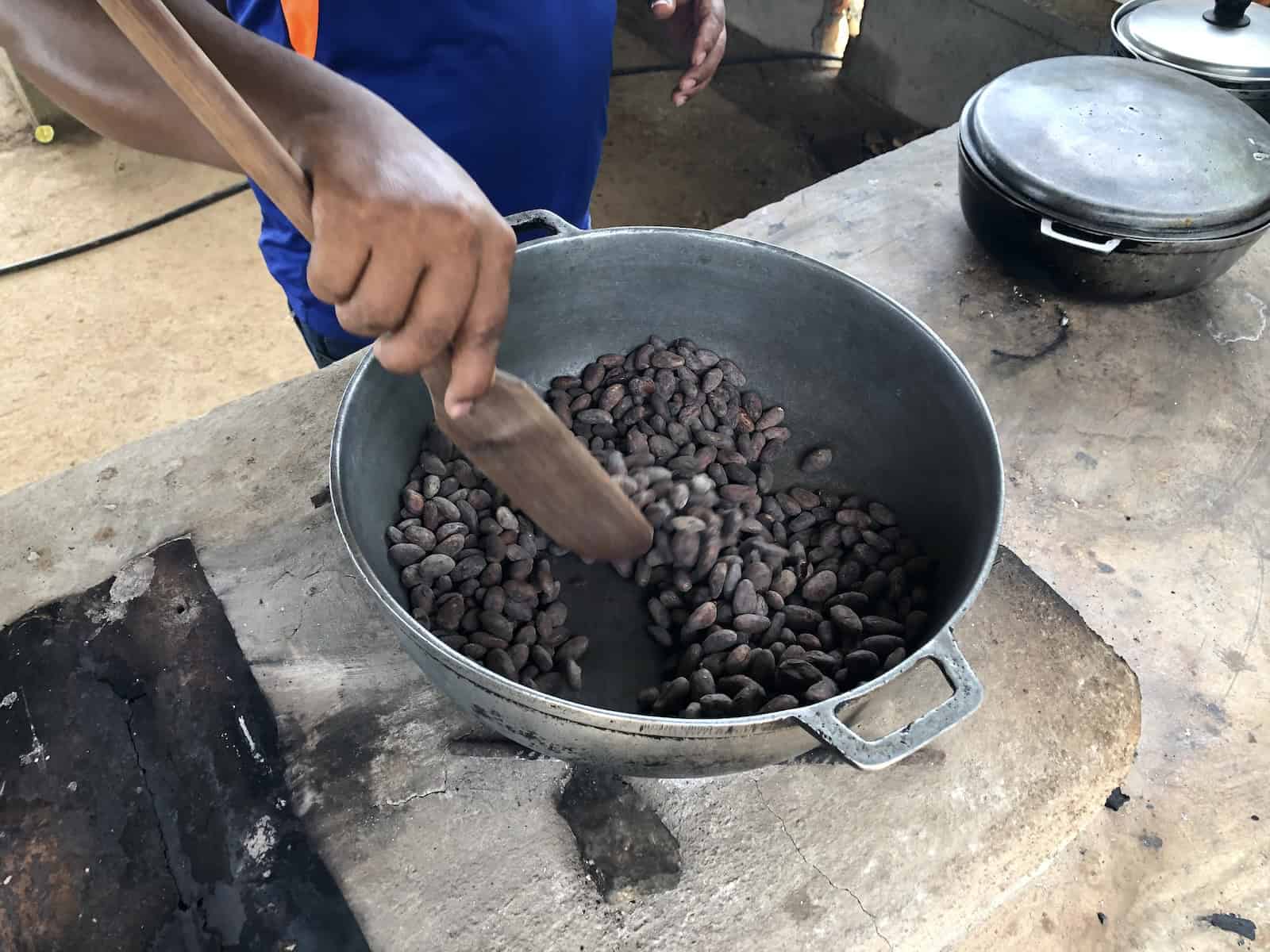
Making Chocolate
From there, we walked to a table where we took the shells off the beans, then placed them into a grinder. We took turns grinding the beans until they formed a paste.

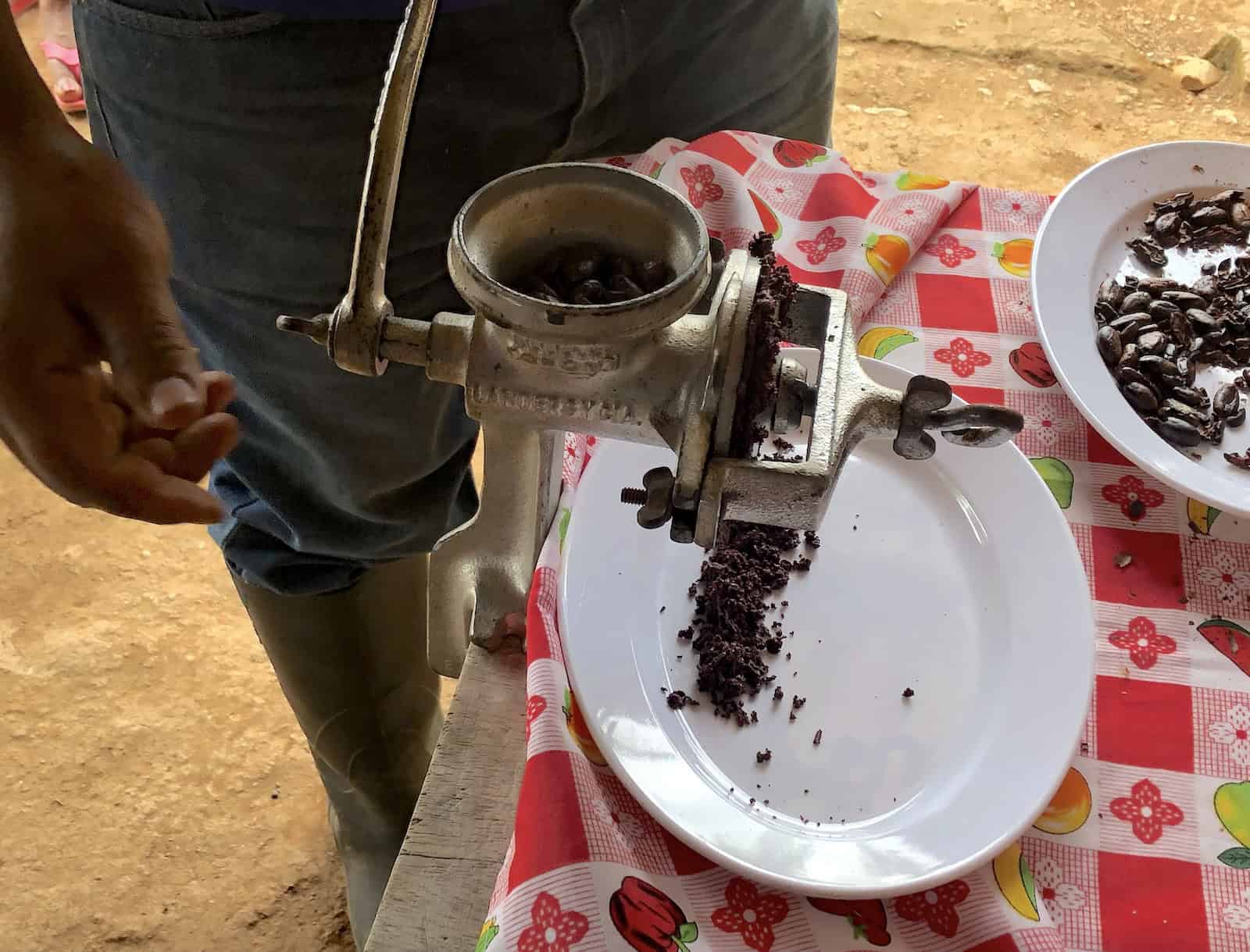

Next, we put the paste into a mold. The farmer wrapped the mold with plastic, then placed it into a bucket full of ice. We let it cool for a good 15 minutes, then took it out and tasted our very own chocolate bar. At 100% cacao, it was quite bitter, but we were all very impressed at how simple the process was. Before leaving the farm, the farmer had us try the remaining paste with different items, such as honey, banana, and apple.
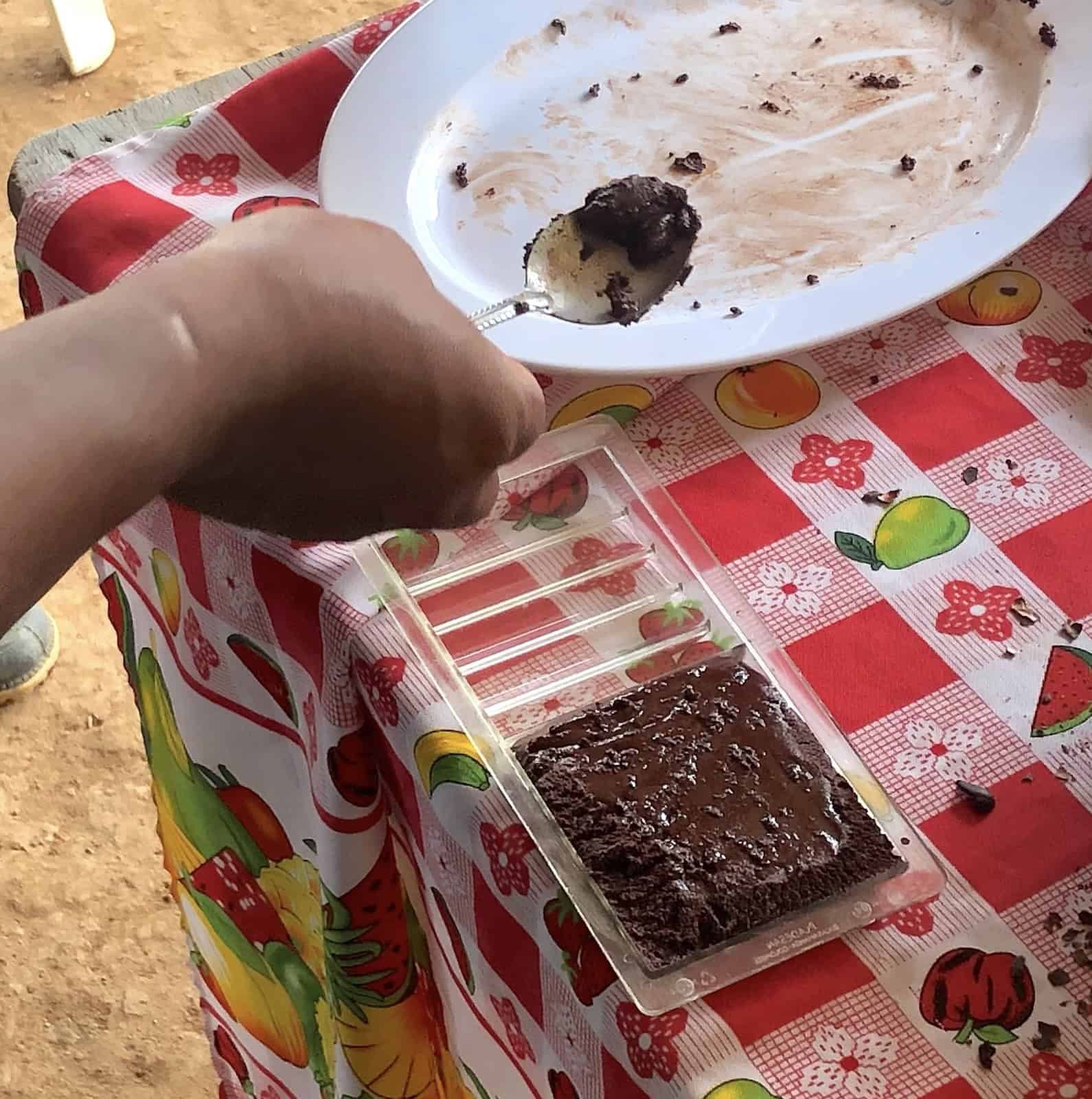
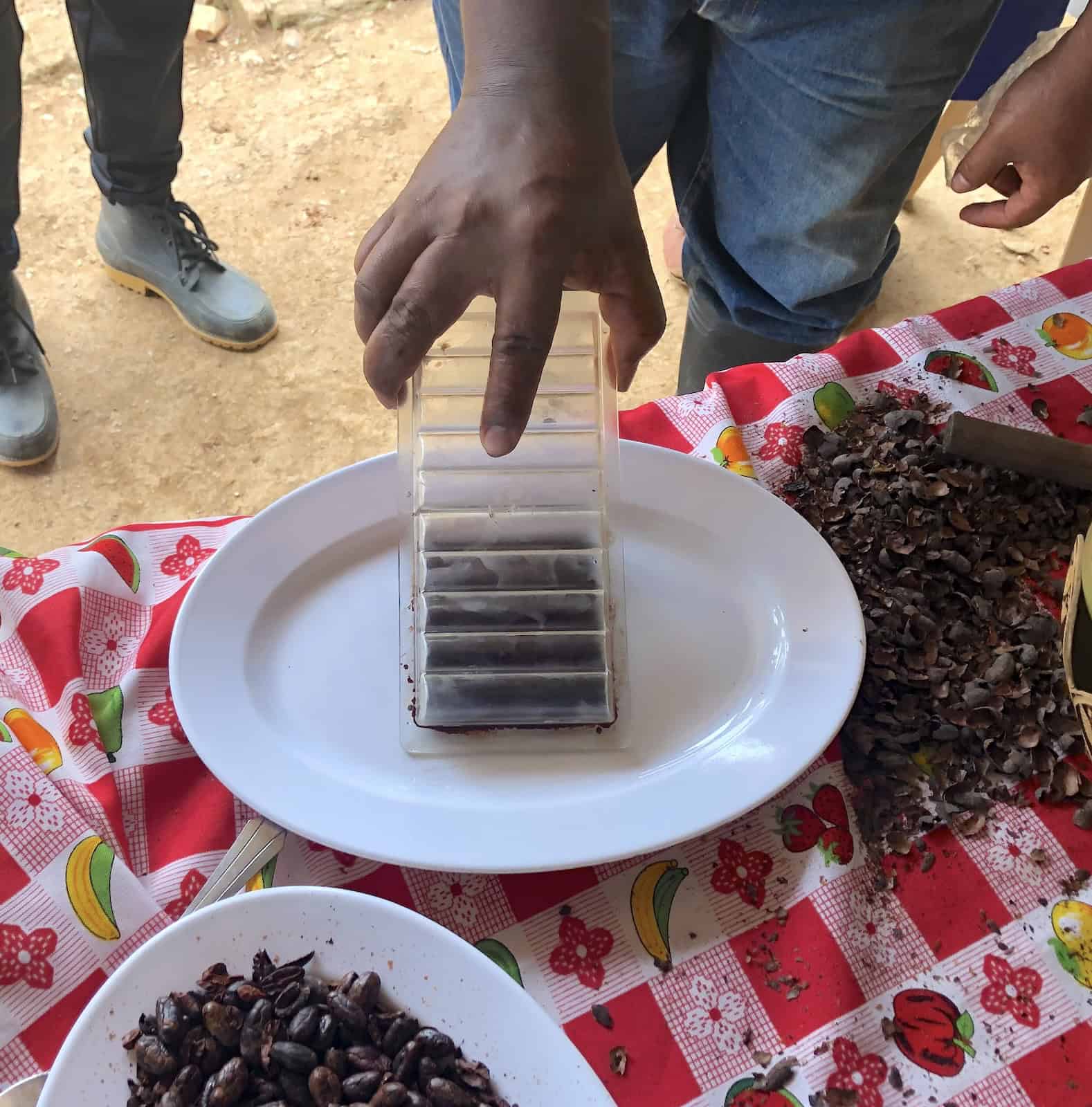

Hiking Down from Finca MiraMar
On our way out, we hiked a short distance uphill until a clearing with incredible views of the coastline. It was some of the most beautiful scenery I had ever experienced in Colombia.
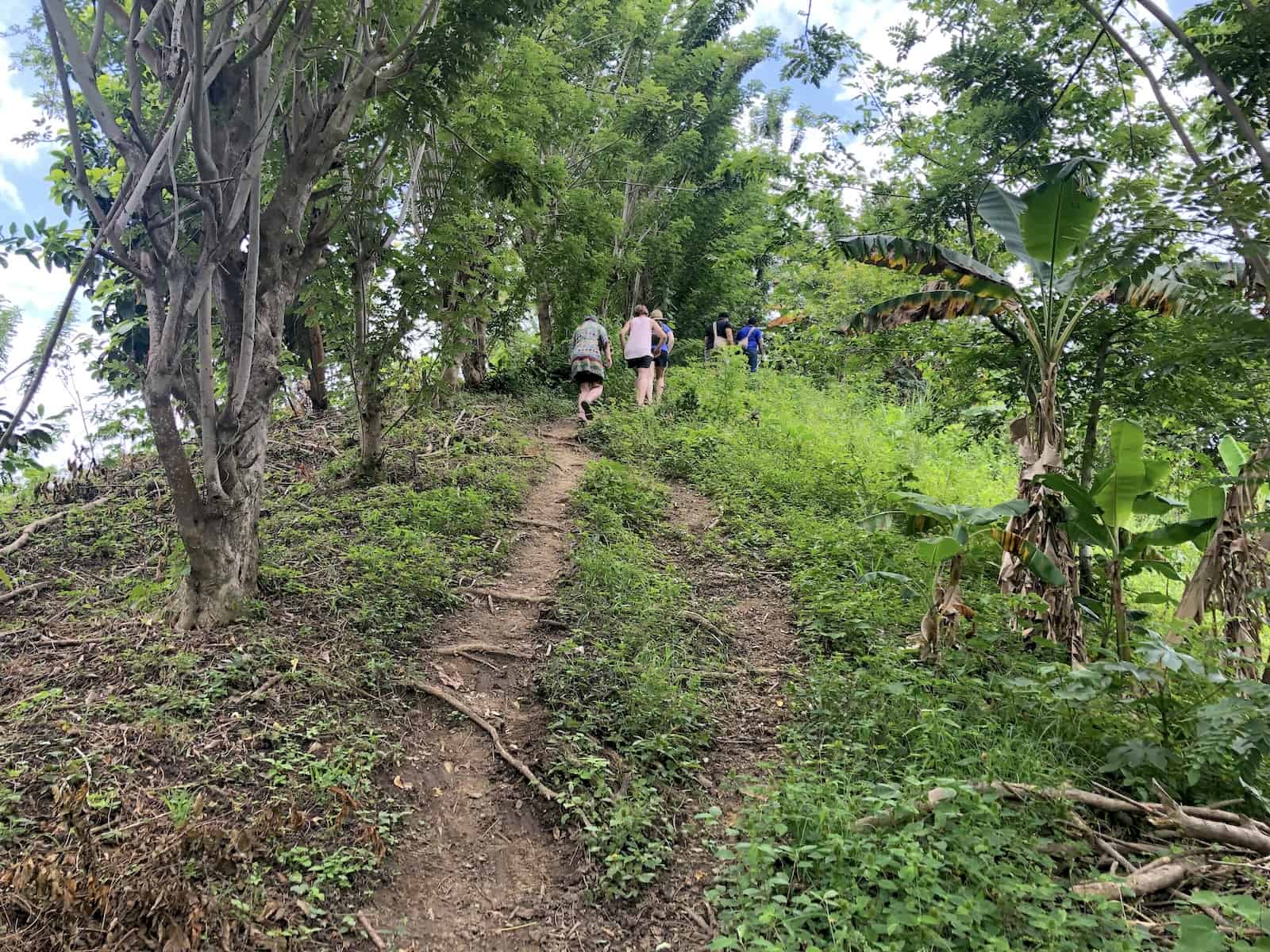
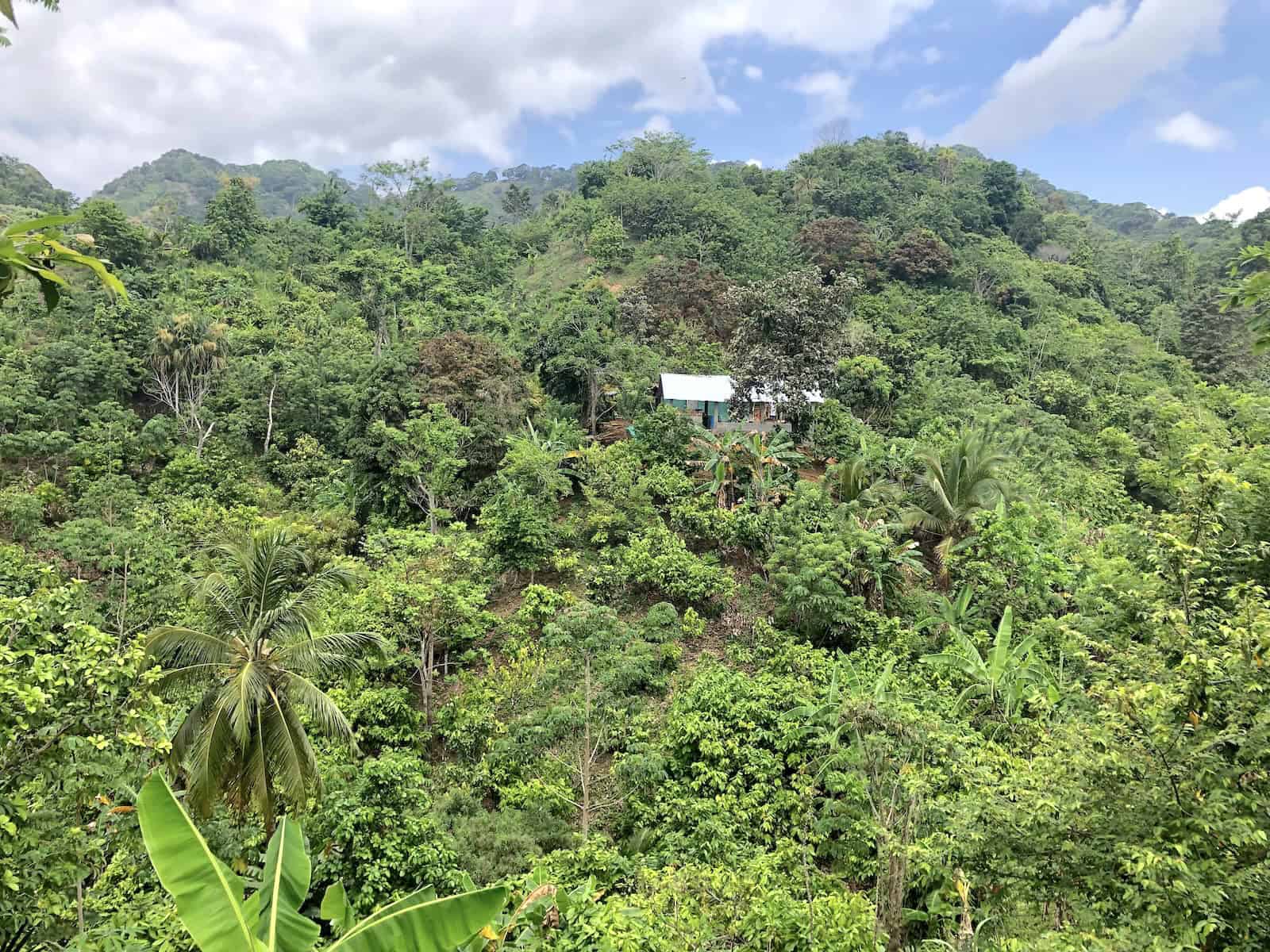
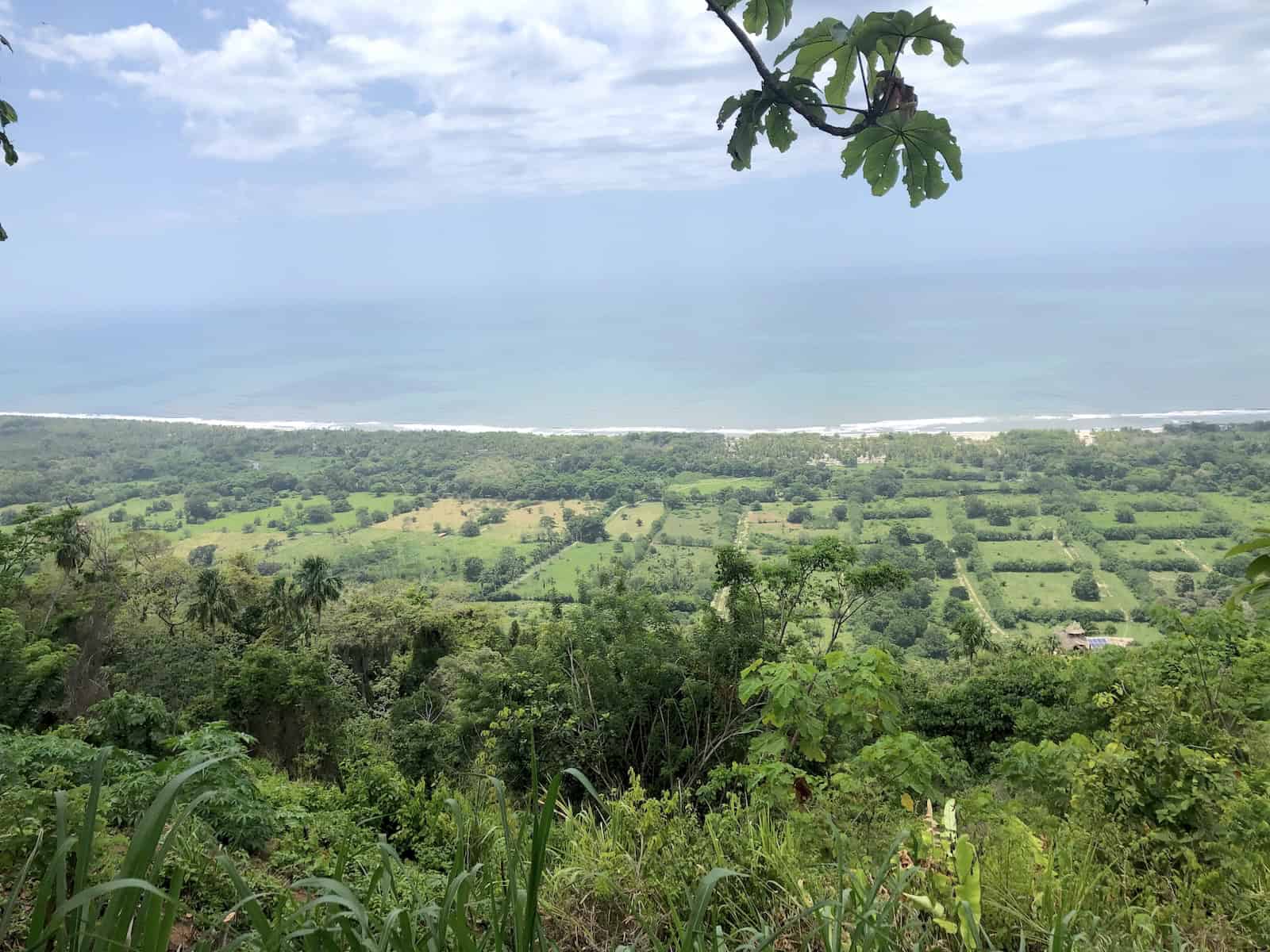
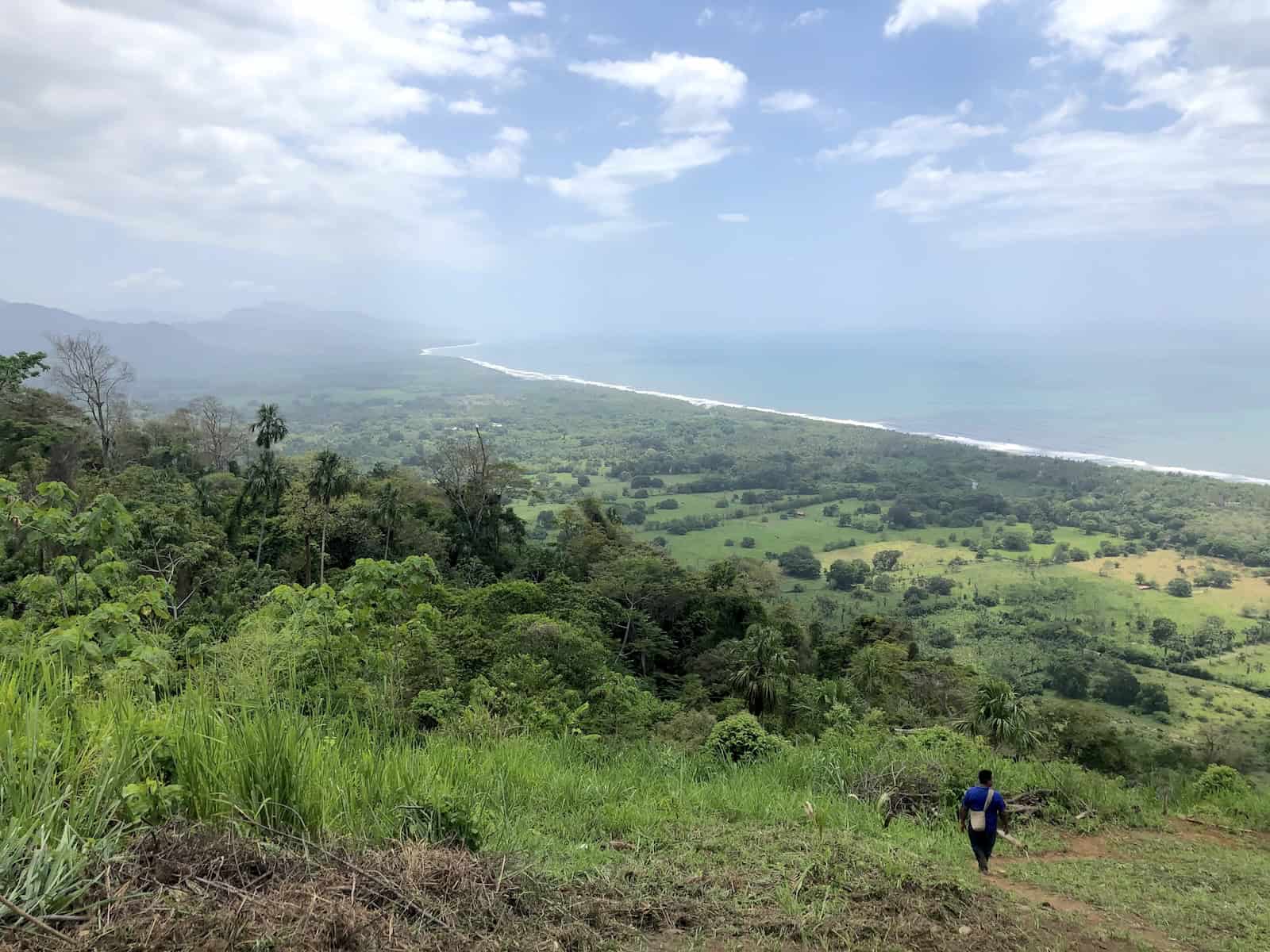
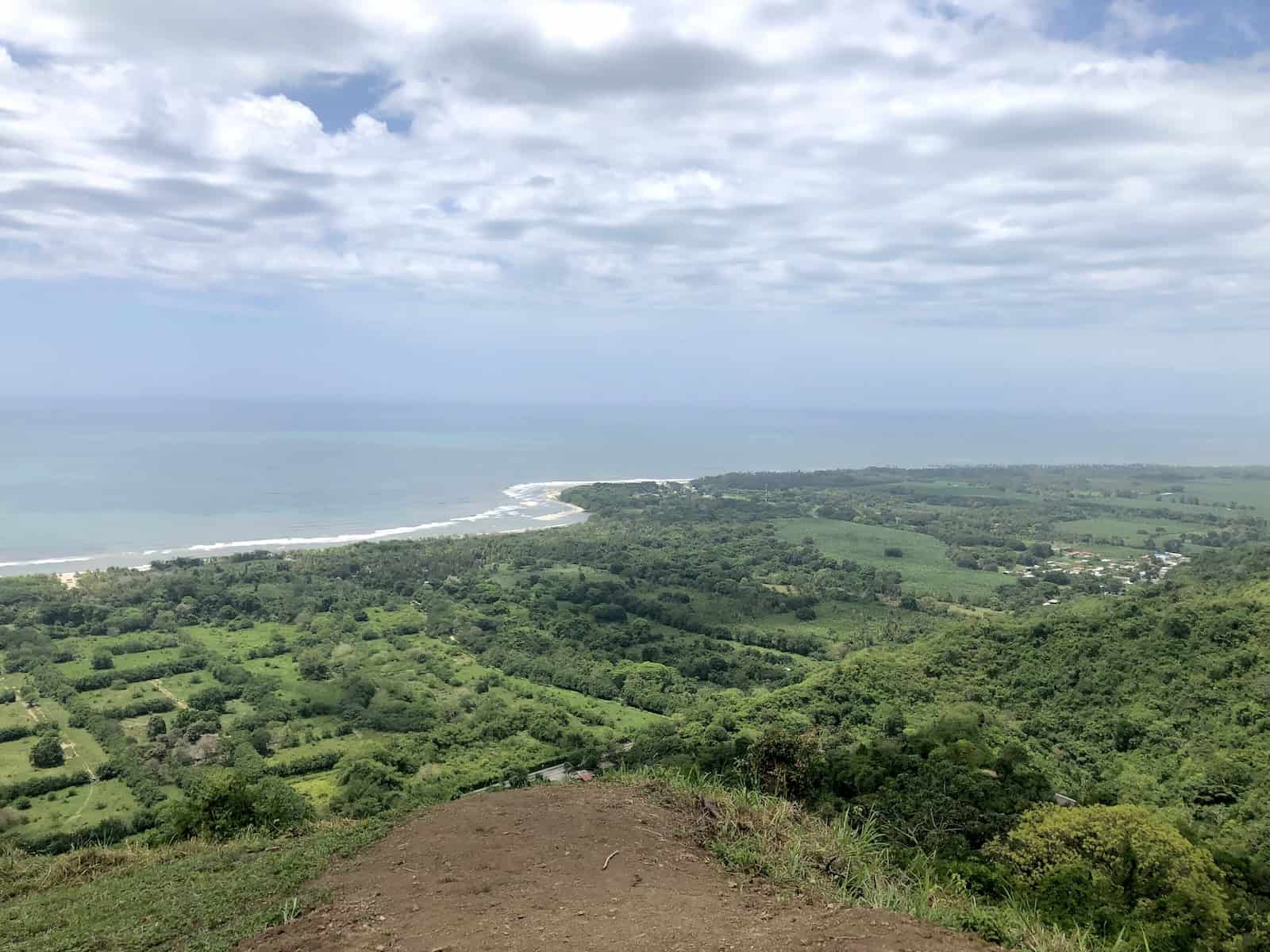
Tubing at Rio Hostel
Another fun activity near Buritaca is to go tubing on the Buritaca River. On the same cacao tour, we had the opportunity to have a fun and relaxing tubing adventure. Rio Hostel runs tubing excursions at 10am and 11:30am. They take about 2 ½ hours. It’s a great time for any kind of group and well worth a few hours. Contact the hostel directly for pricing.
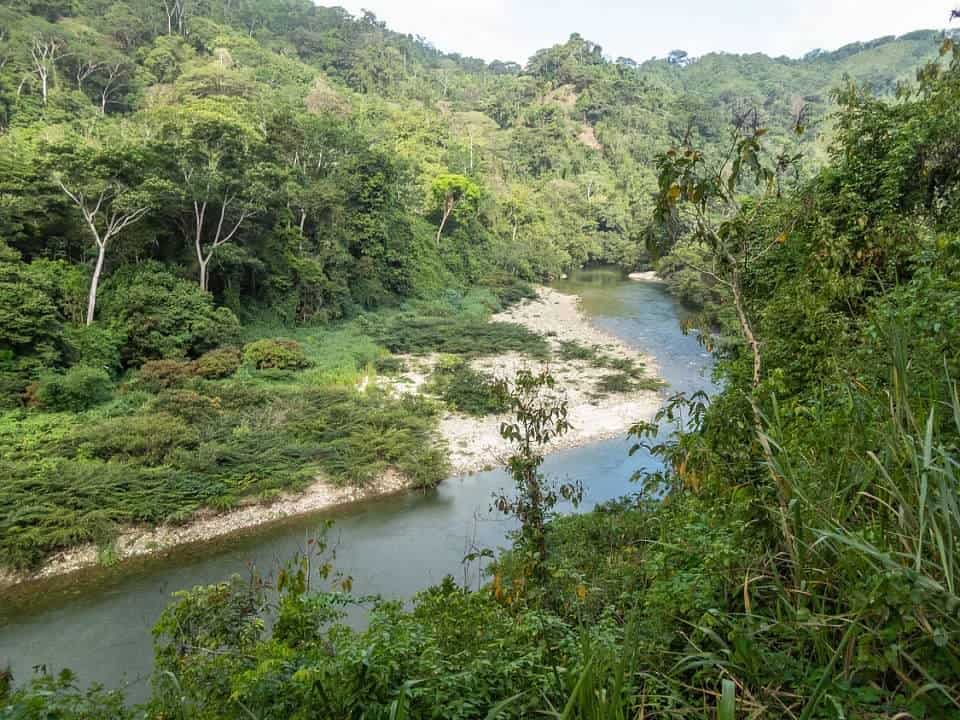
We picked up some inner tubes and drove to Rio Hostel. Once there, we walked a good 45 minutes along the Buritaca River until we reached a place to enter the water. There were some rapids and a few stops along the way where we were able to swing on vines or jump into the river from high rocks.
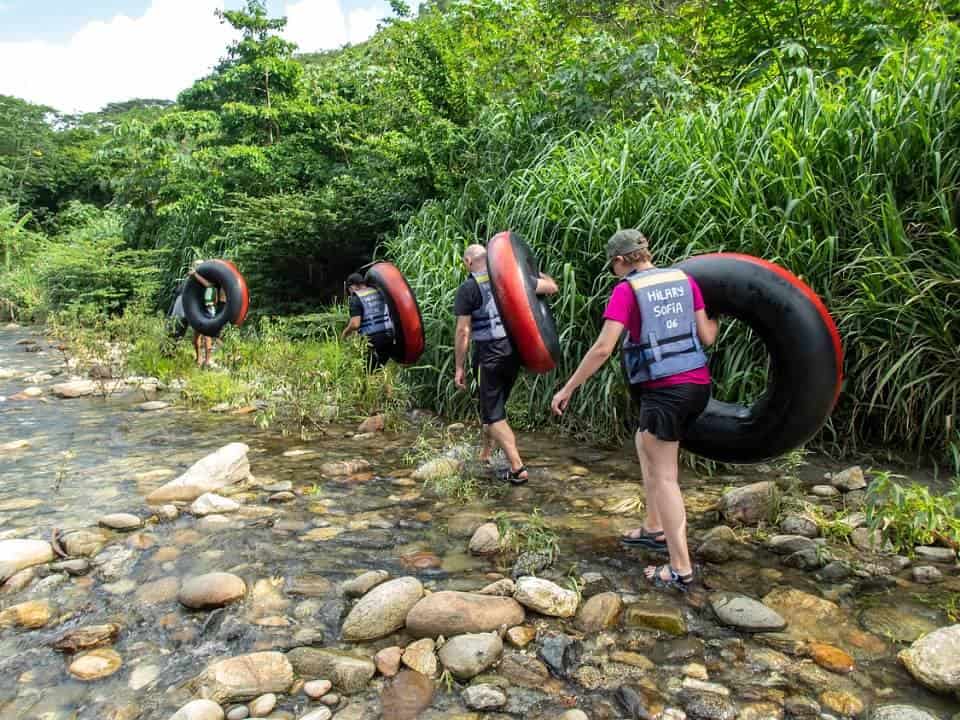
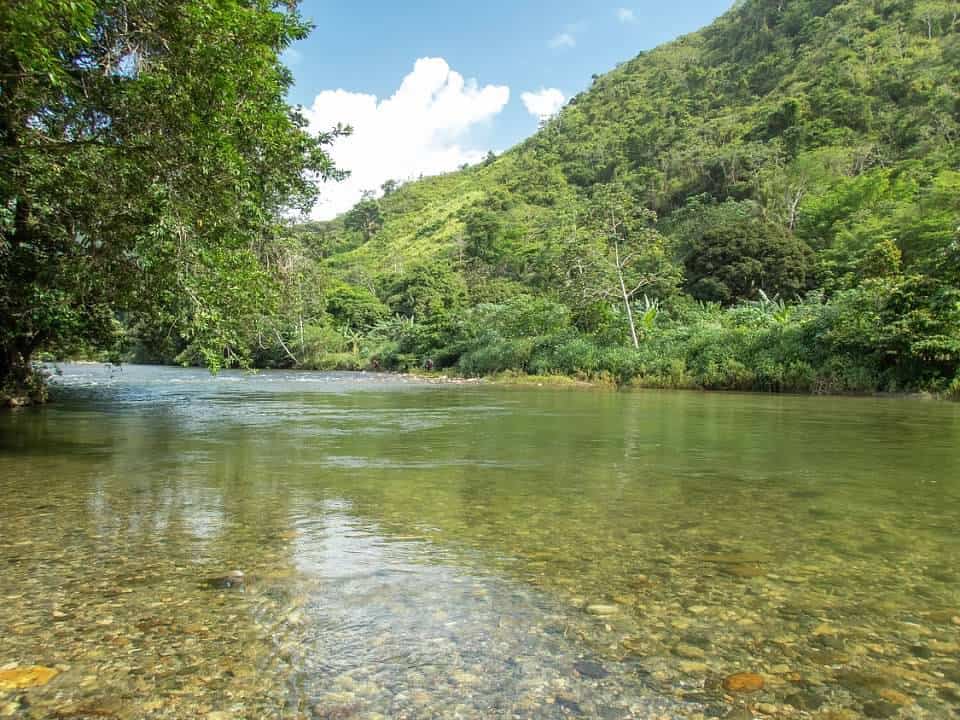
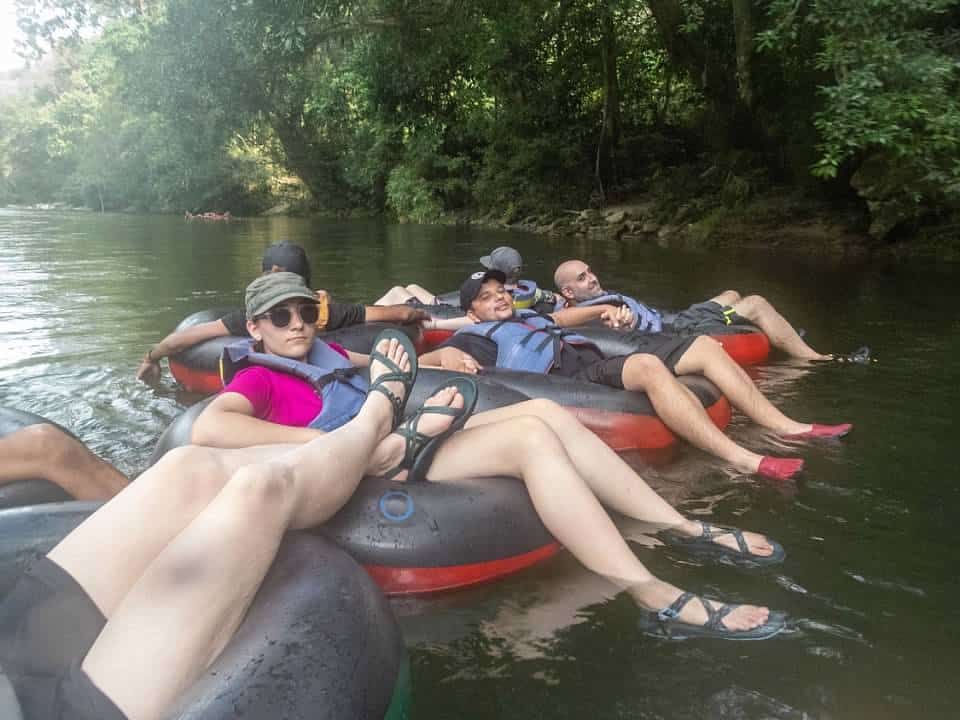
My Thoughts on Buritaca
Overall, I highly recommend spending some time in Buritaca. Whether you’re staying in or near the village or all the way in Santa Marta, there’s plenty of entertaining activities to keep you busy. The cacao tour is definitely the highlight for me, but tubing and Quebrada Valencia are also great.


